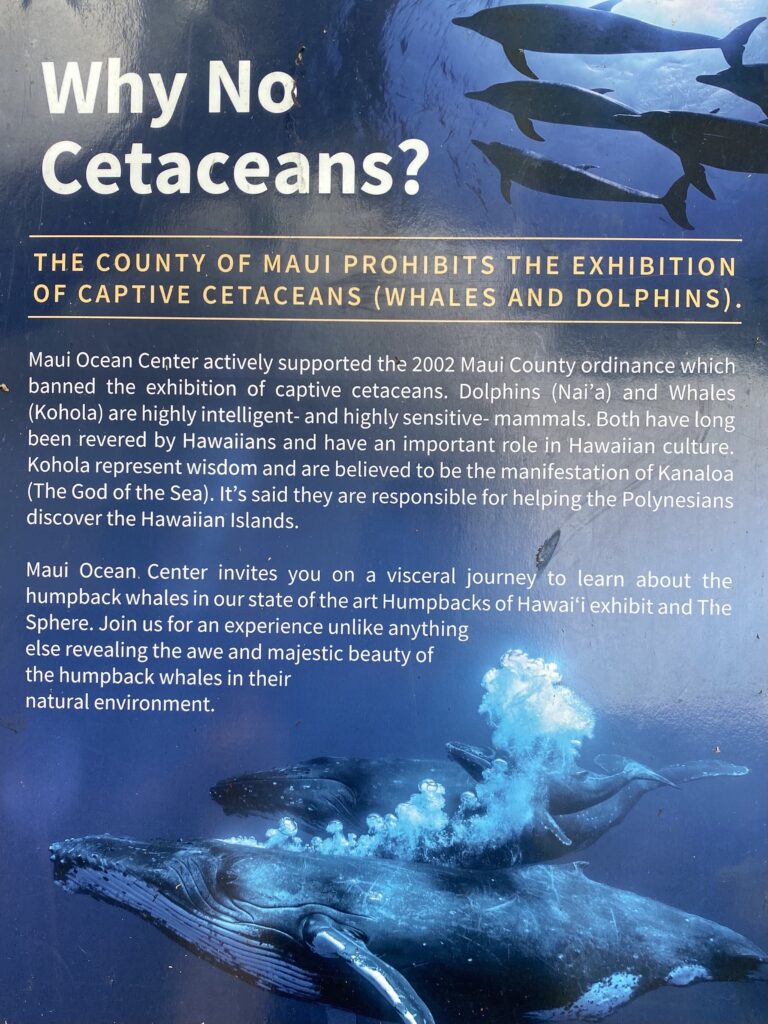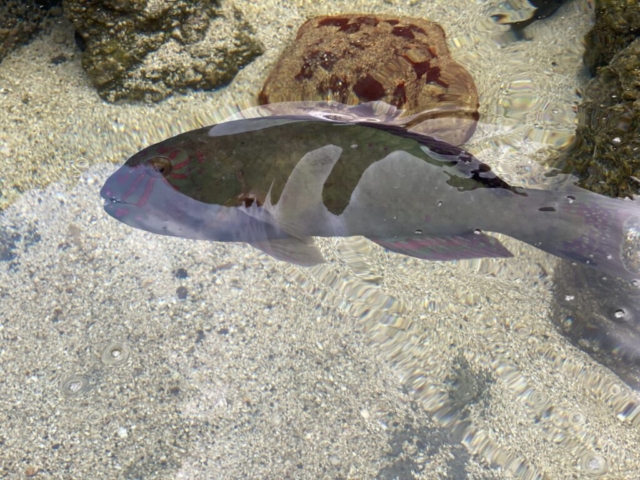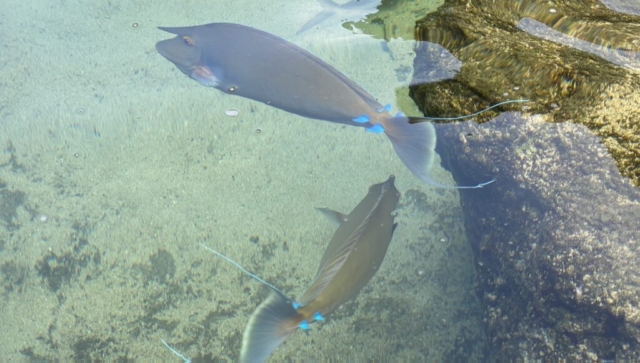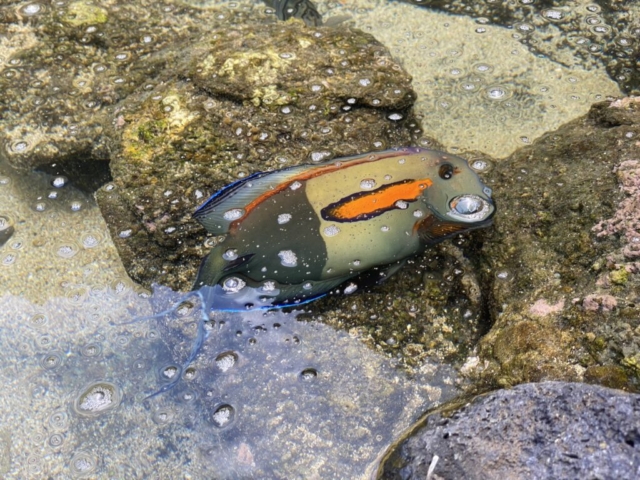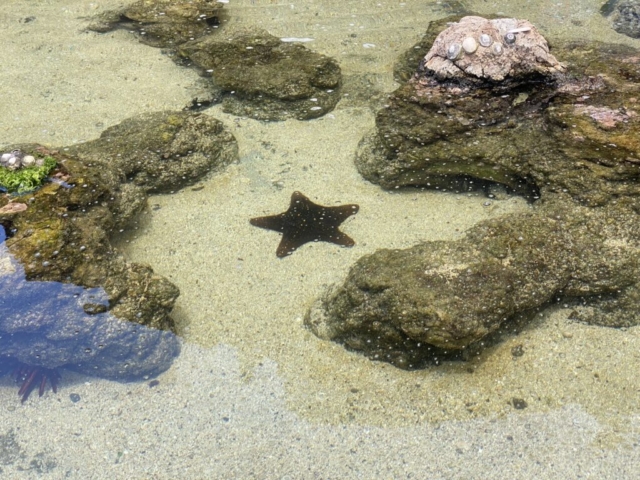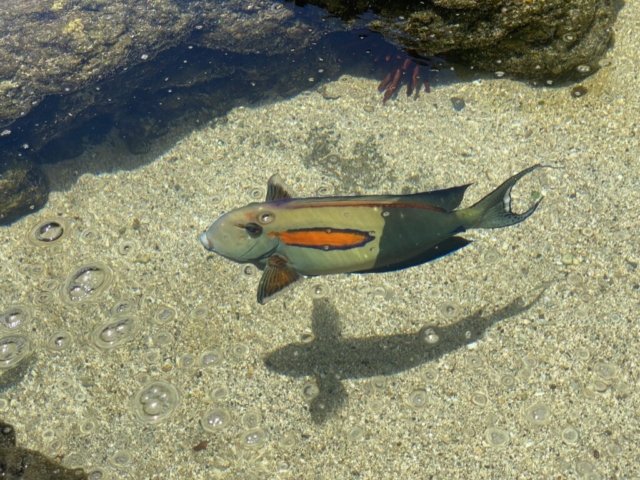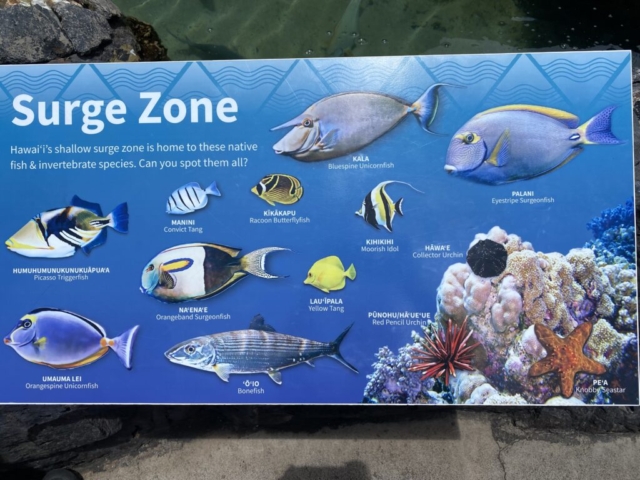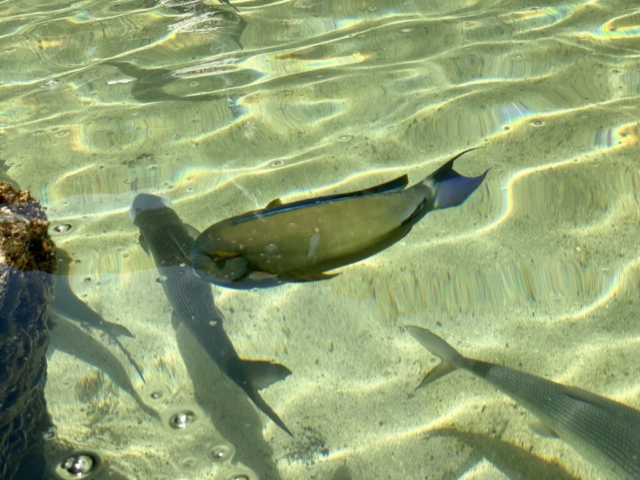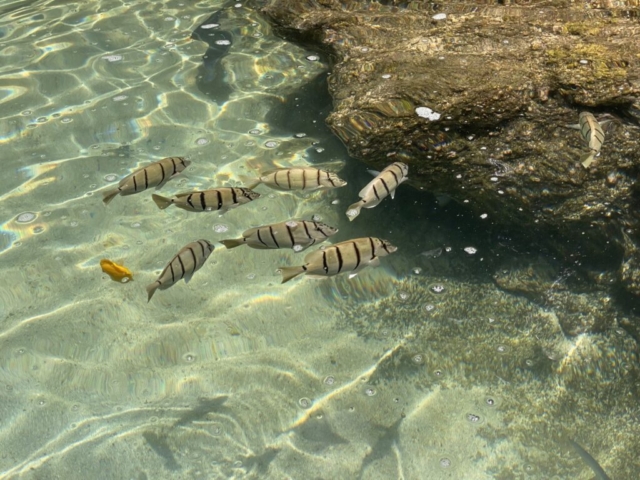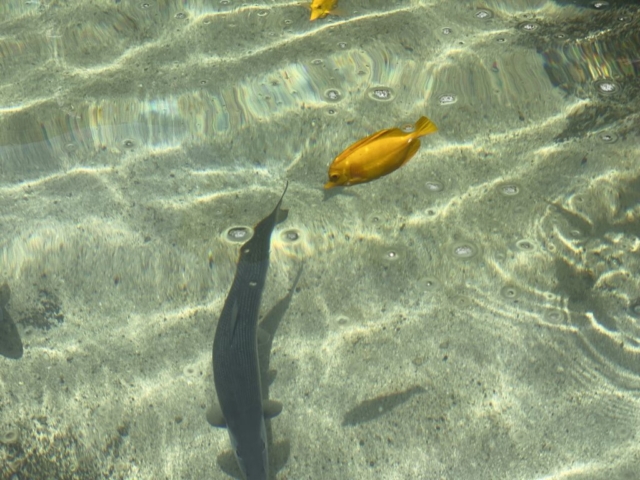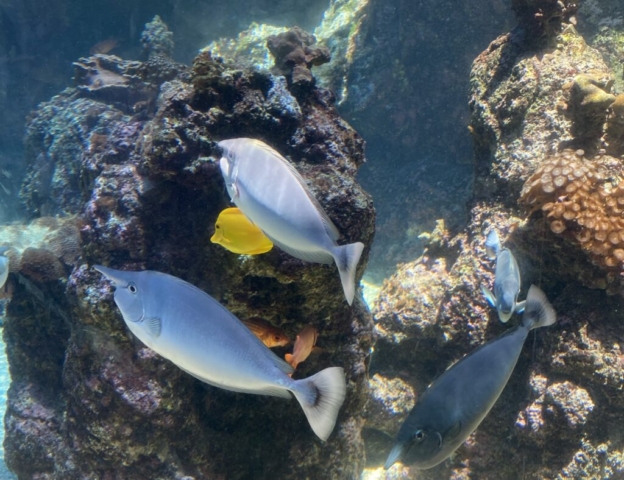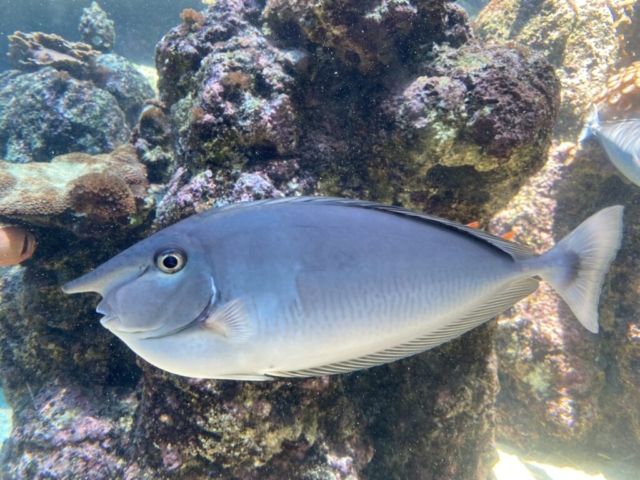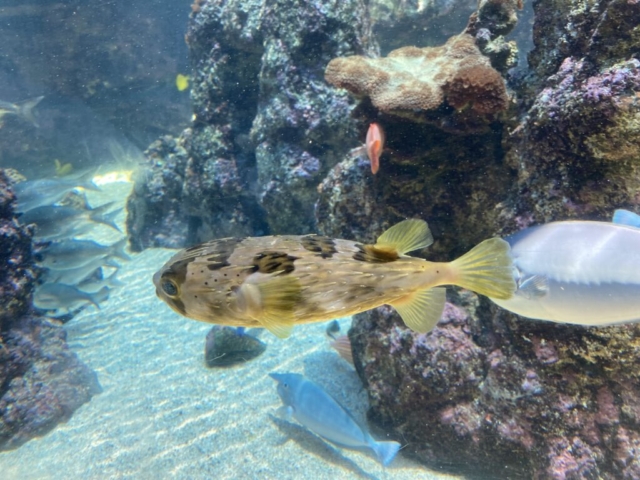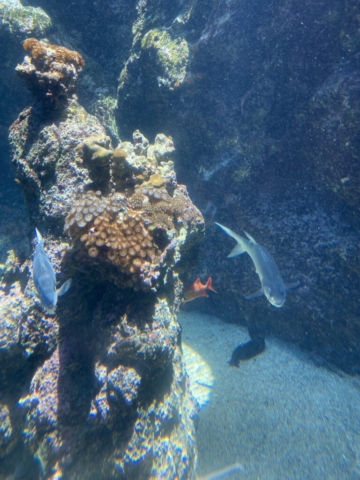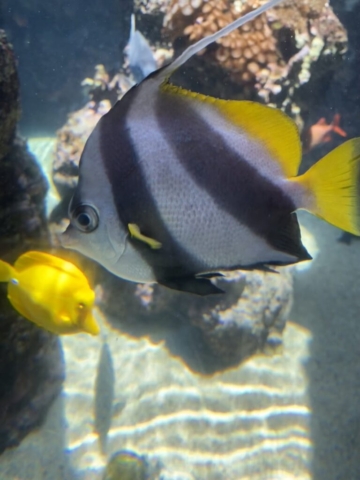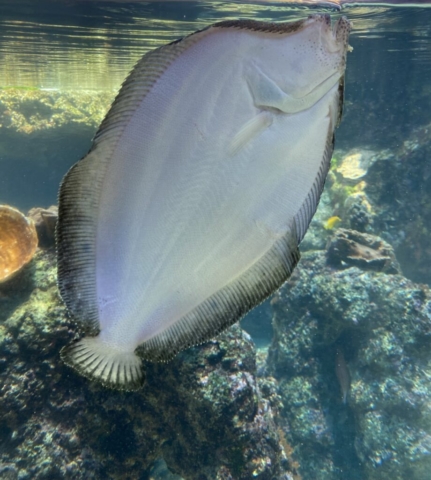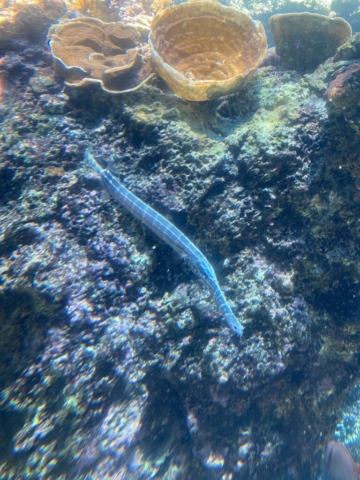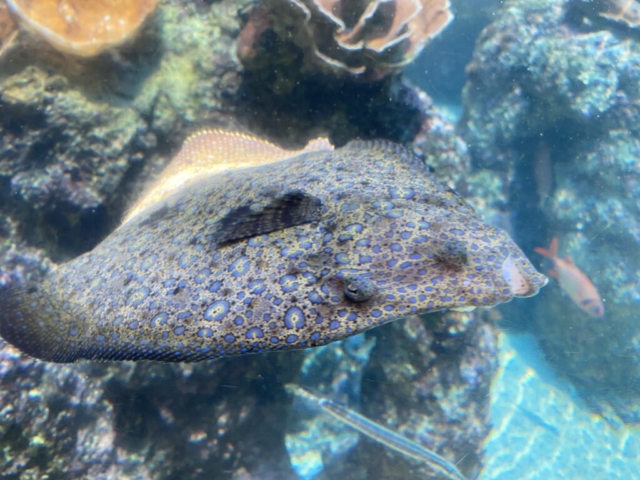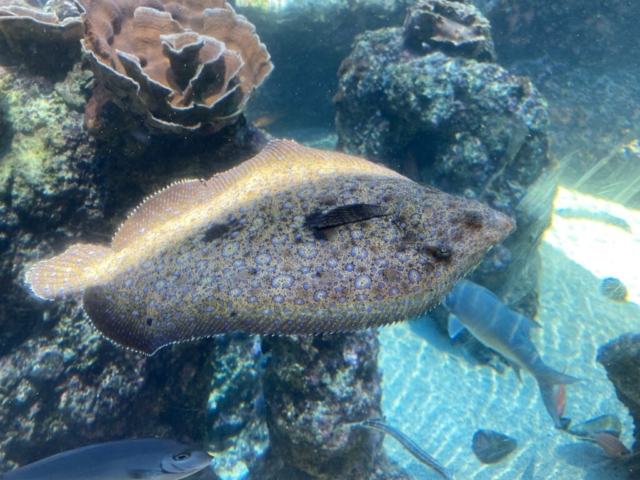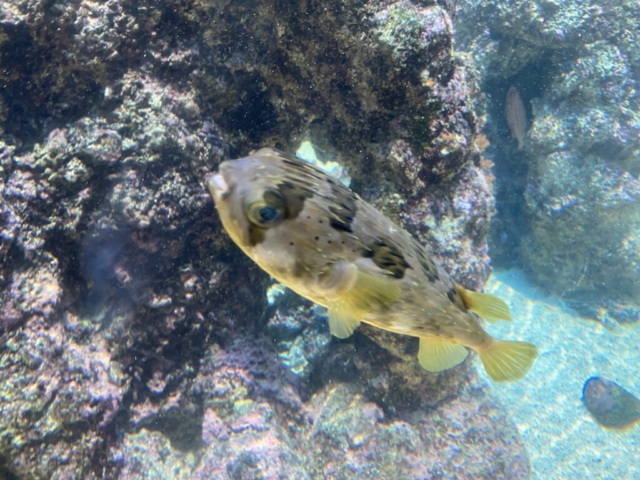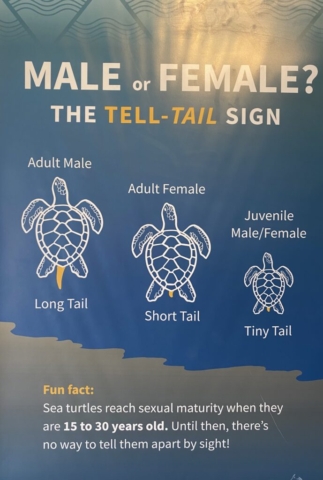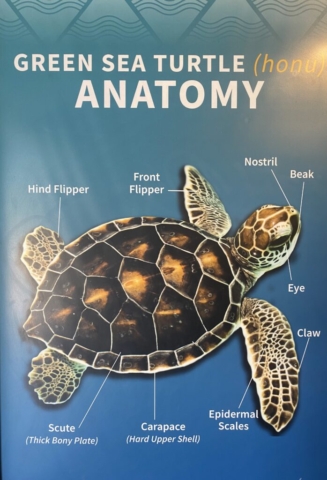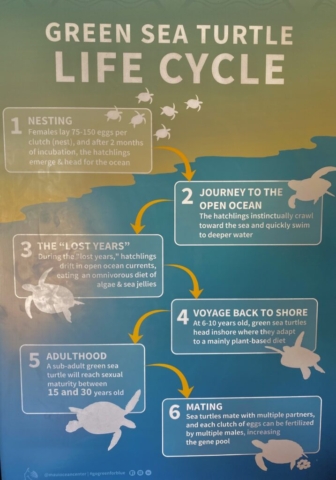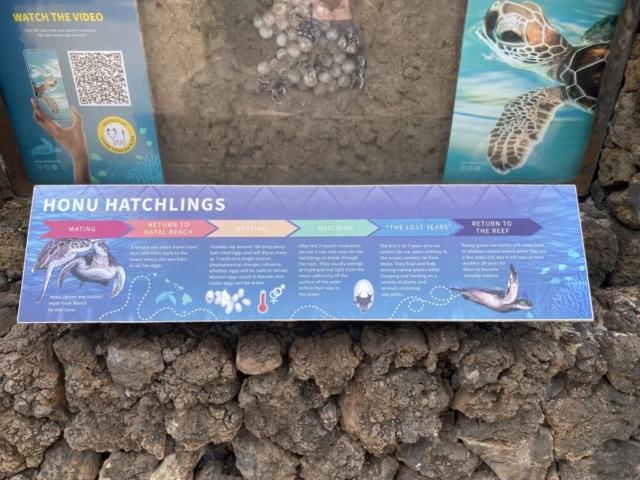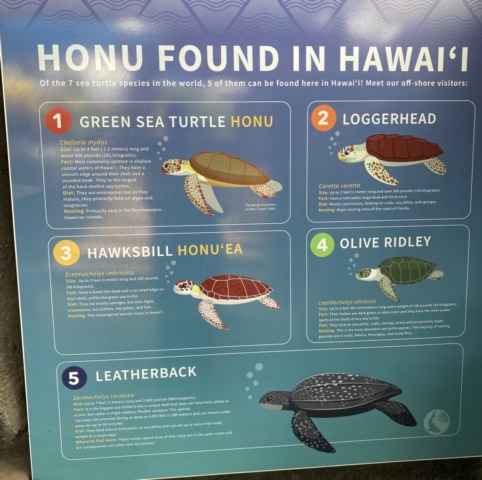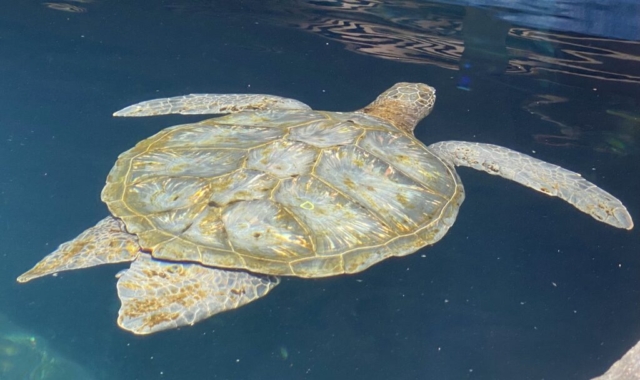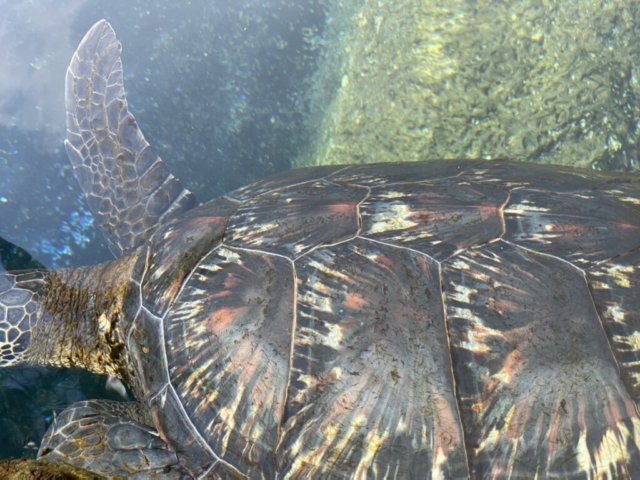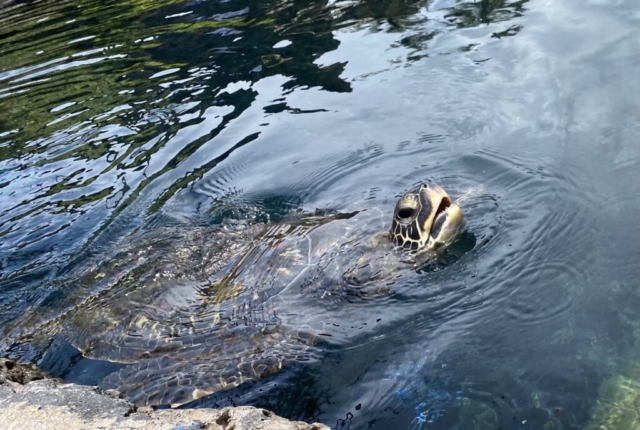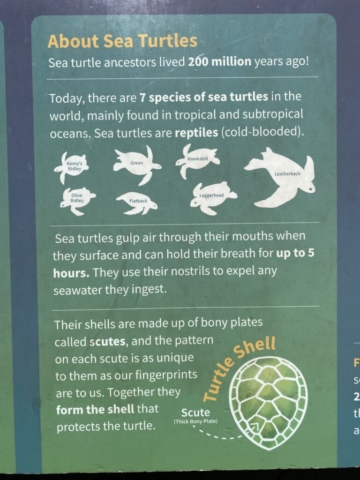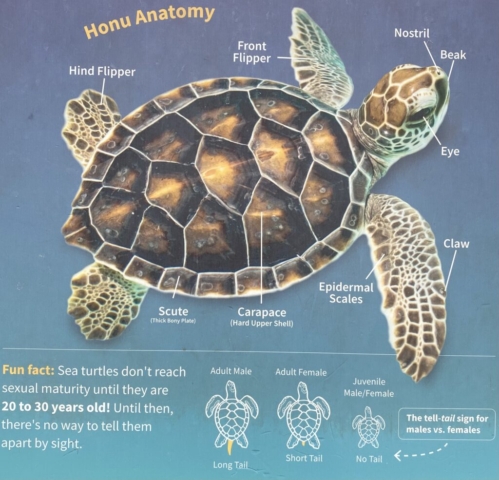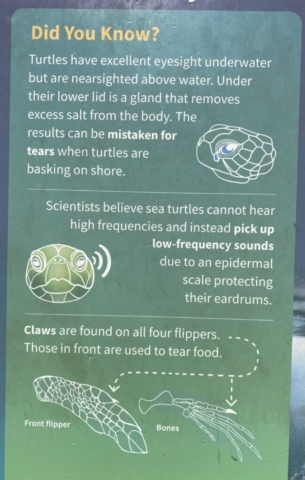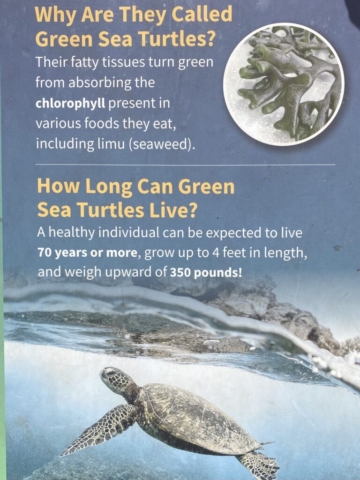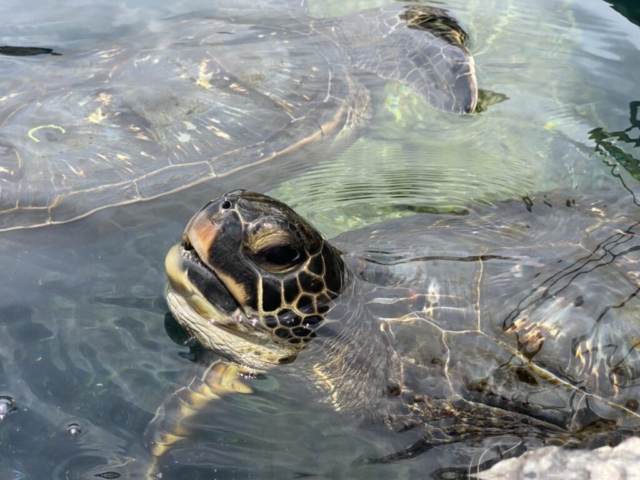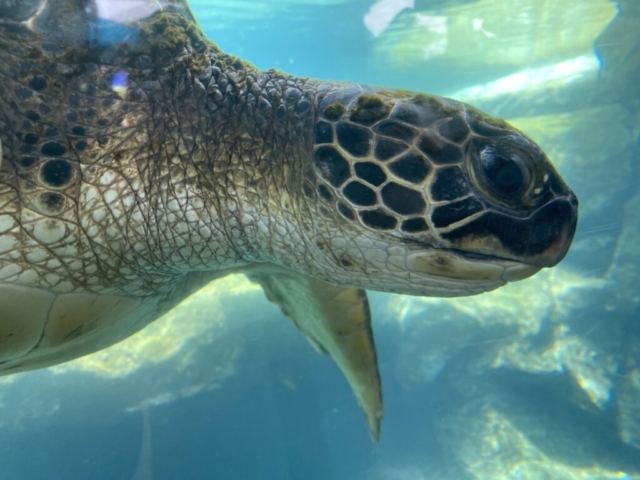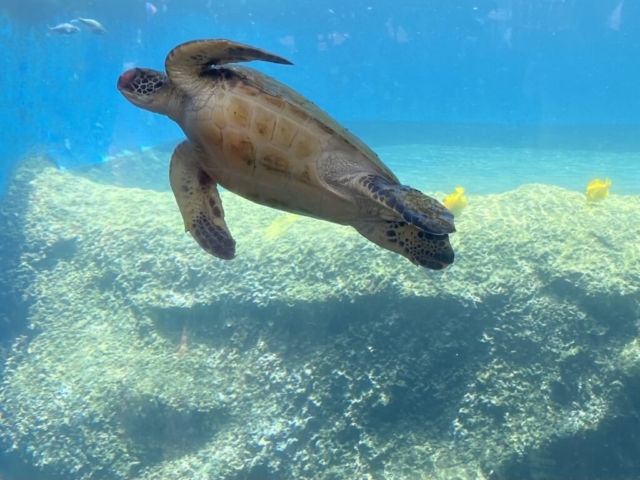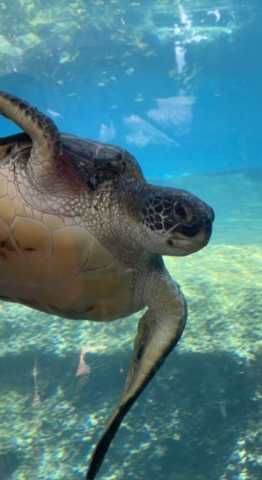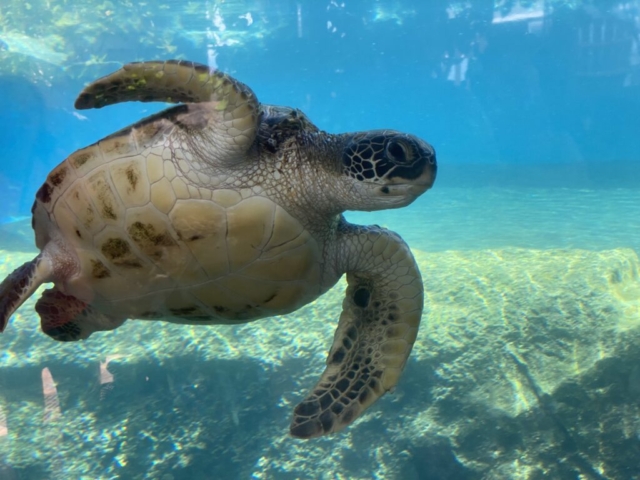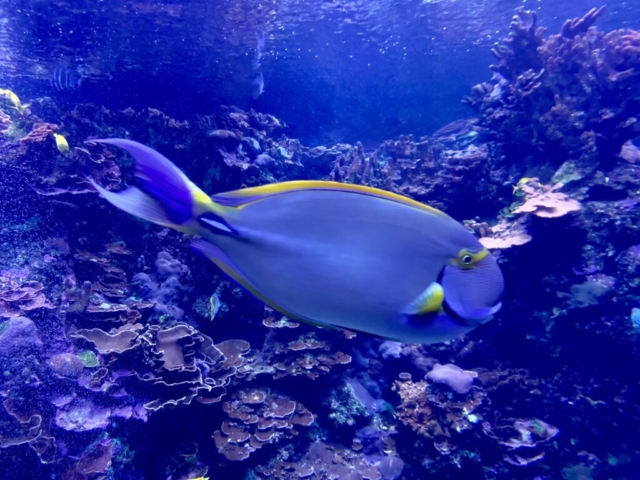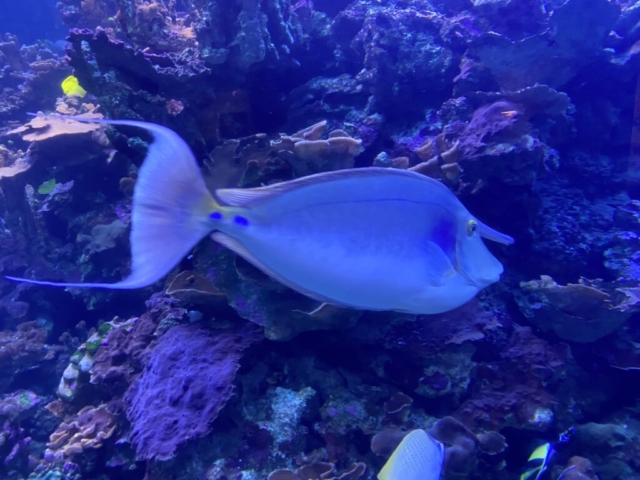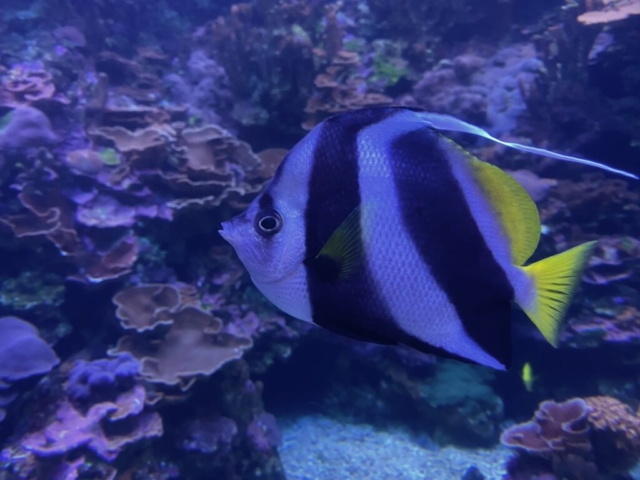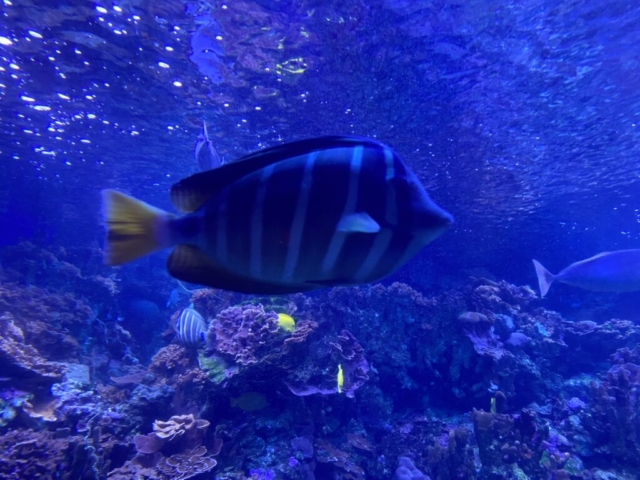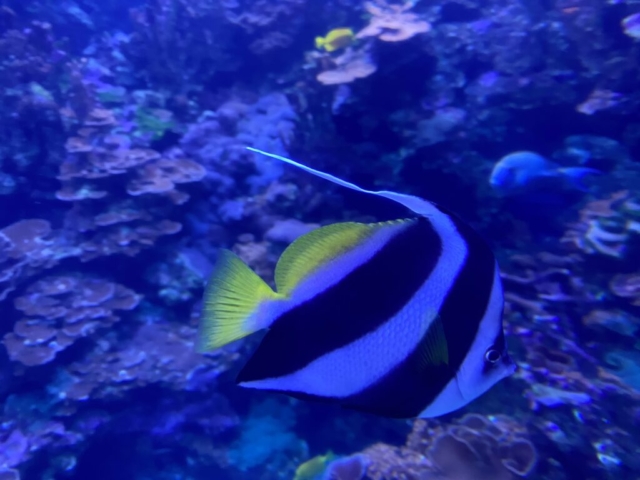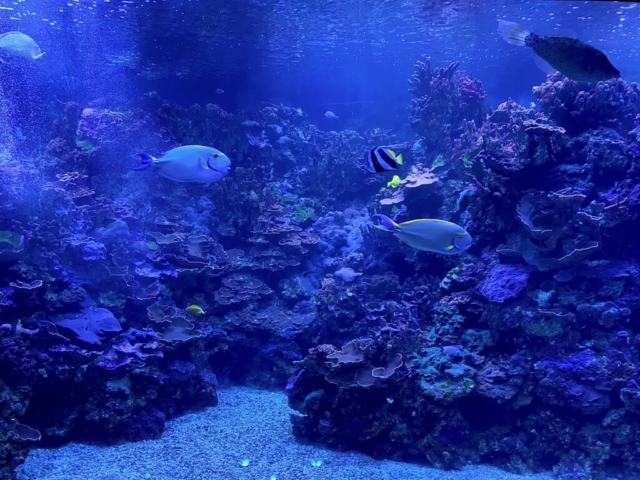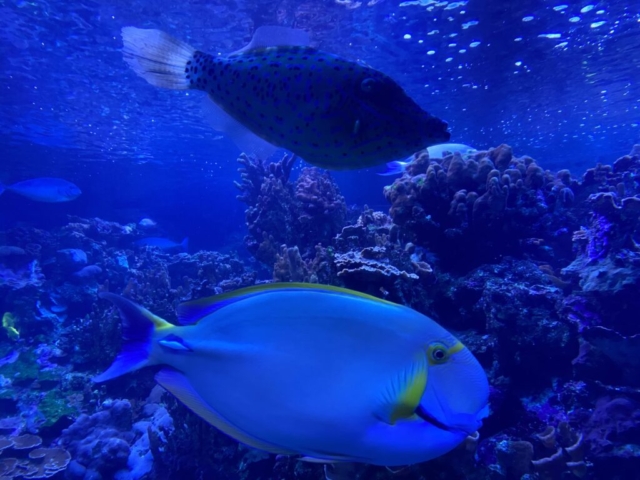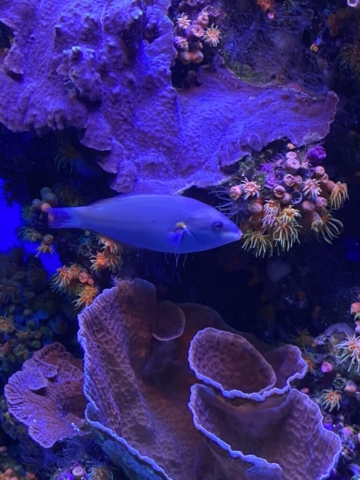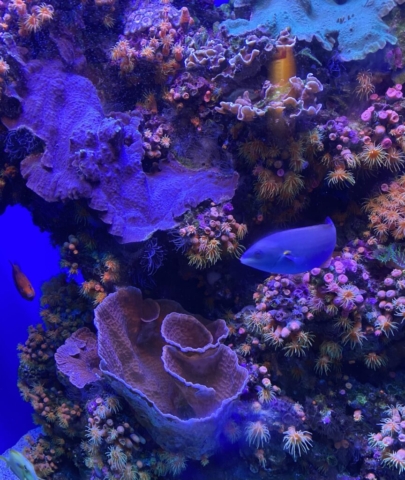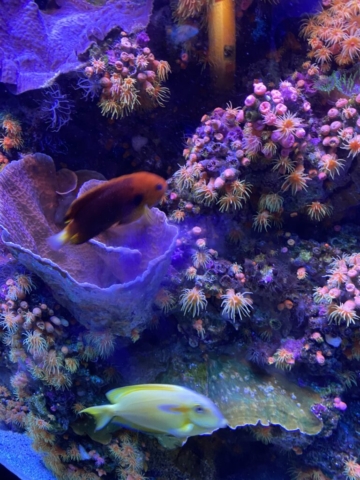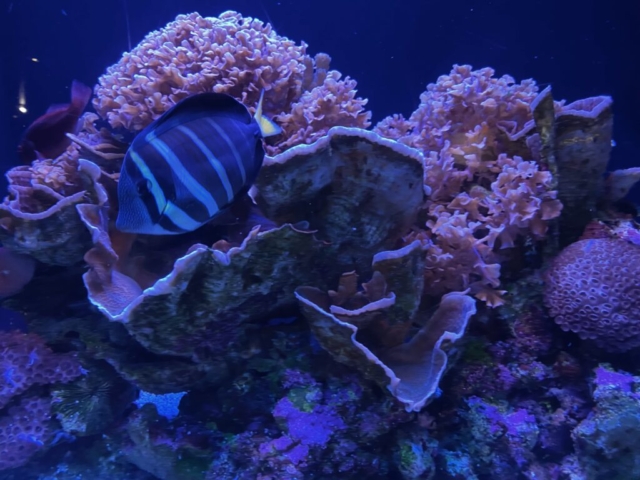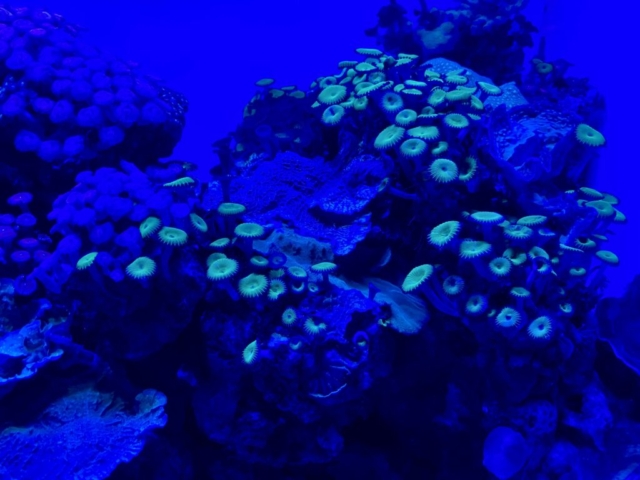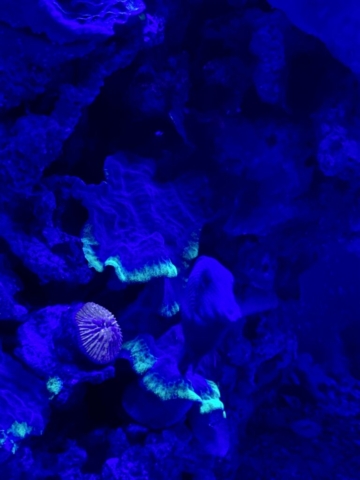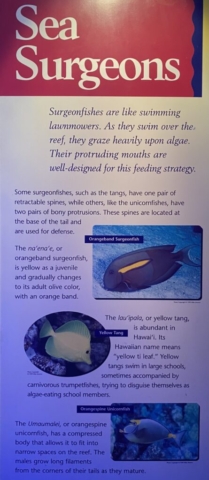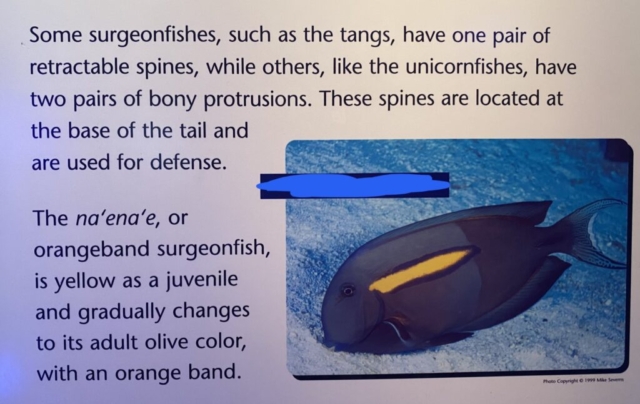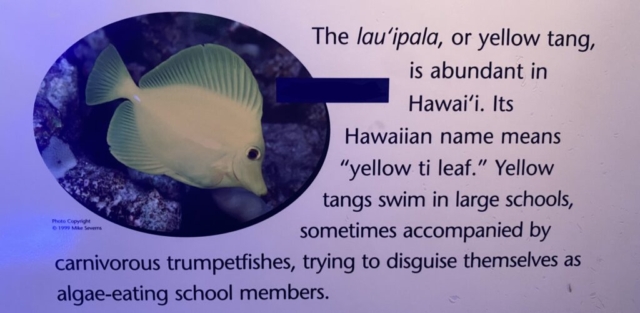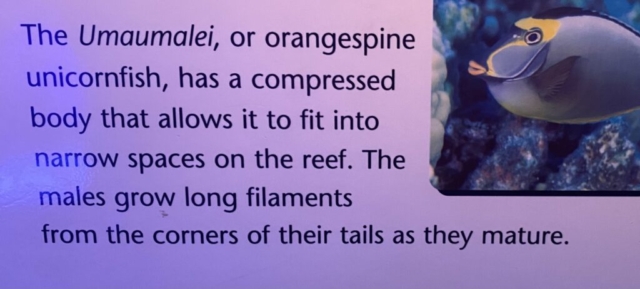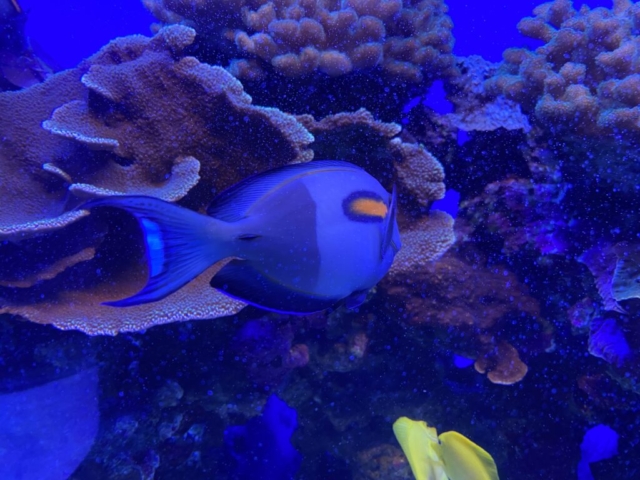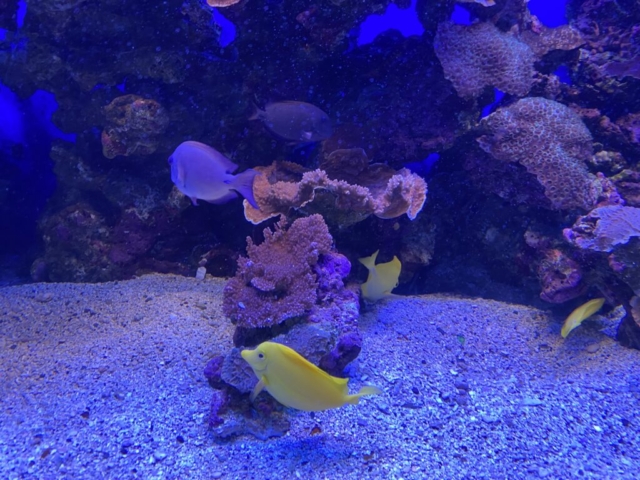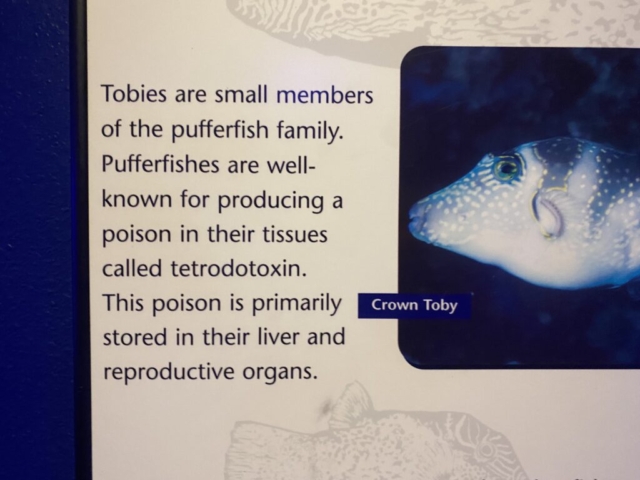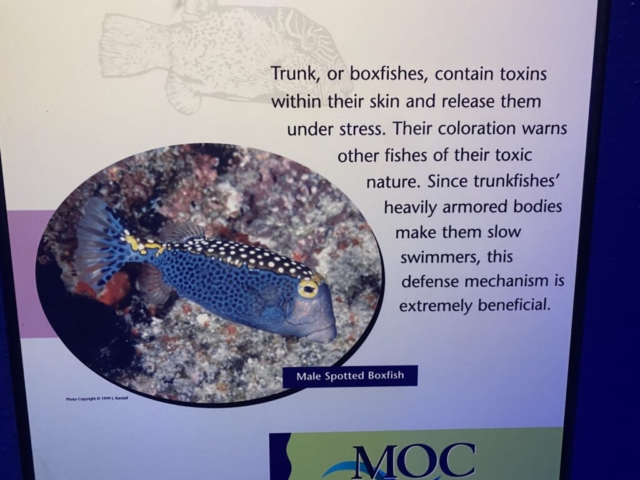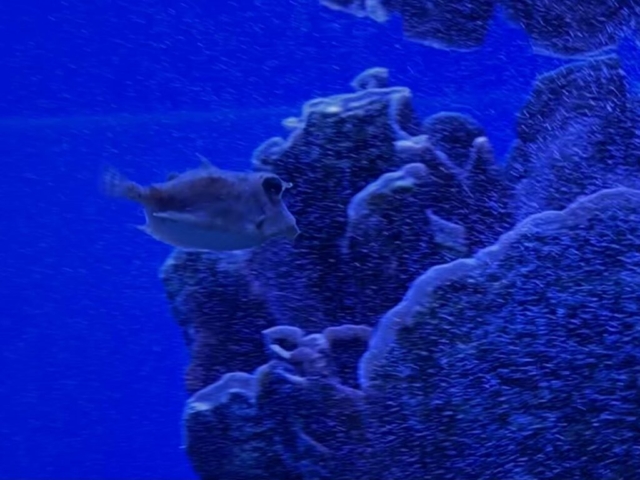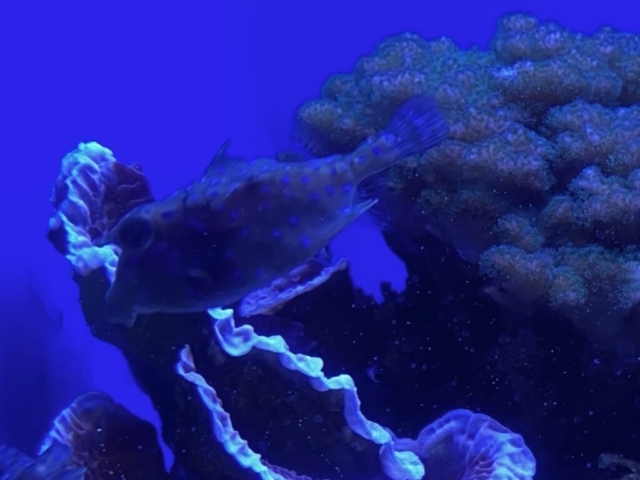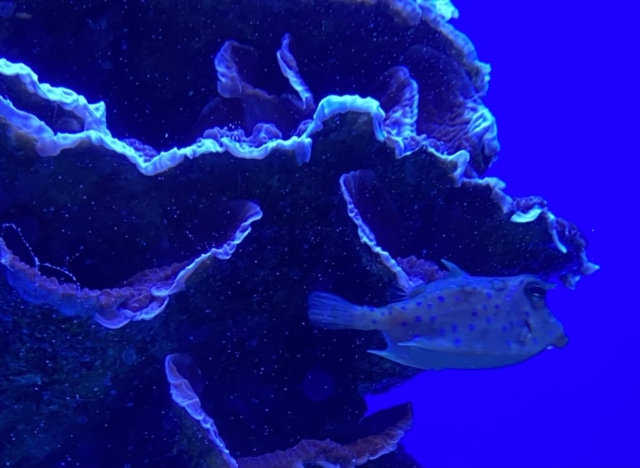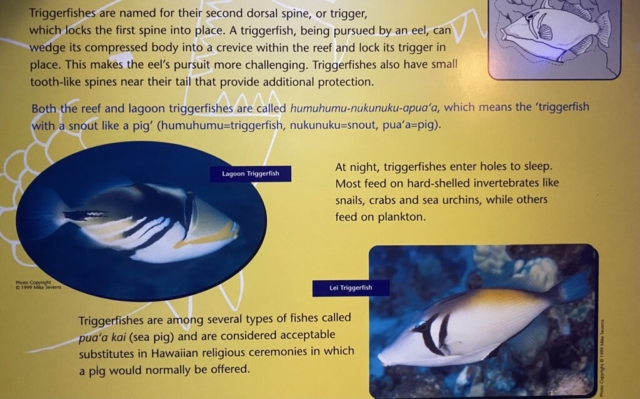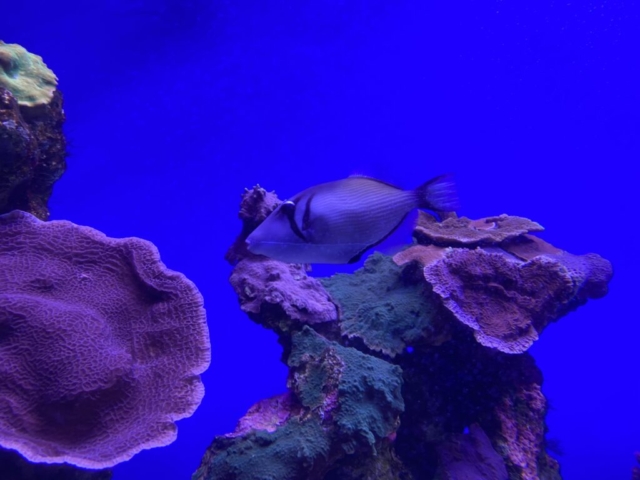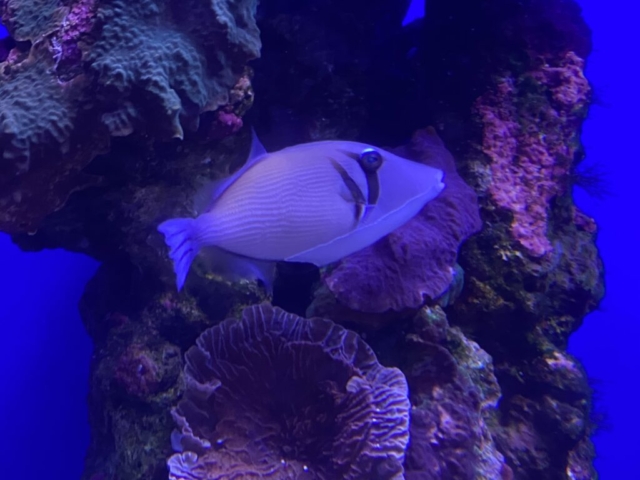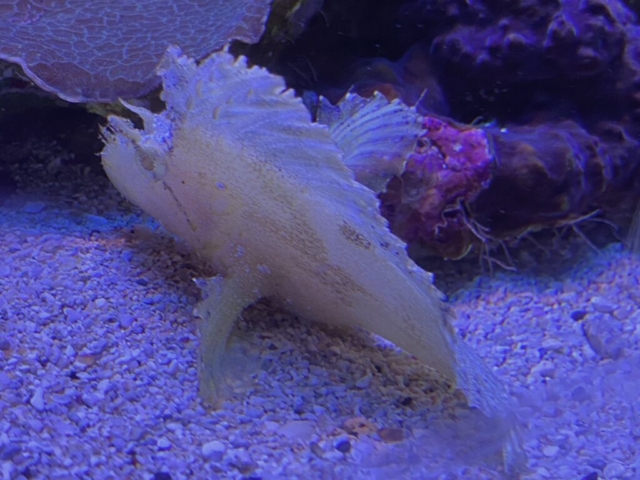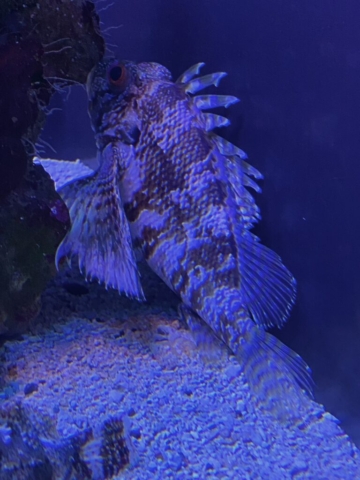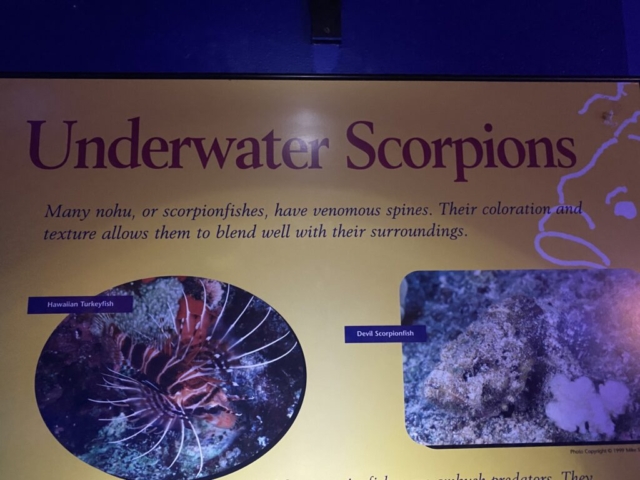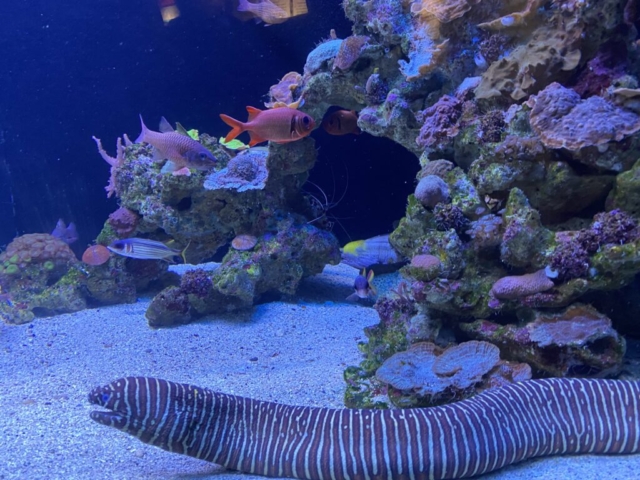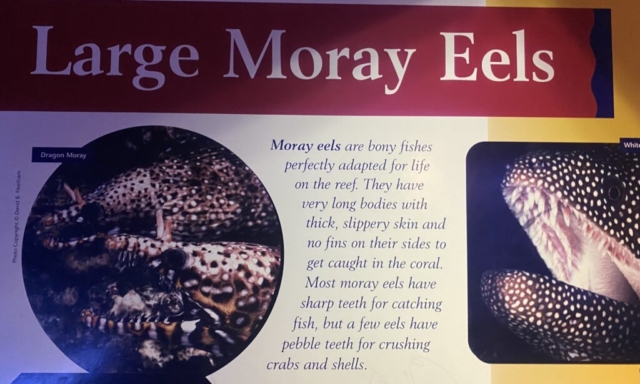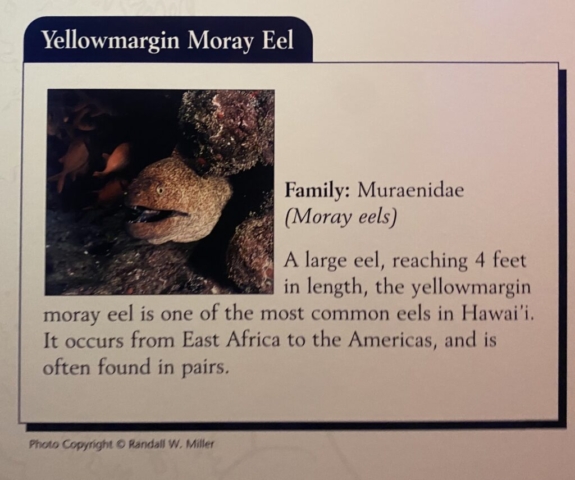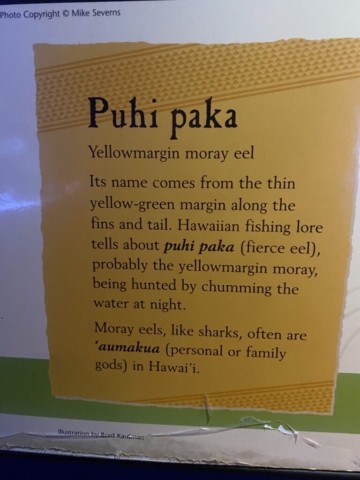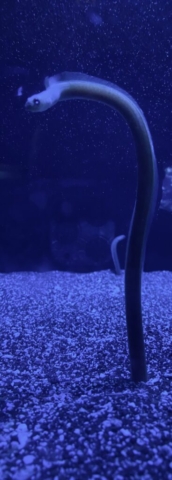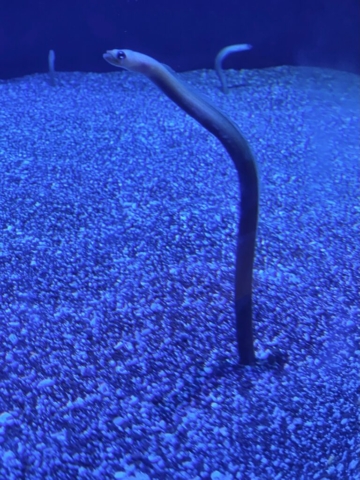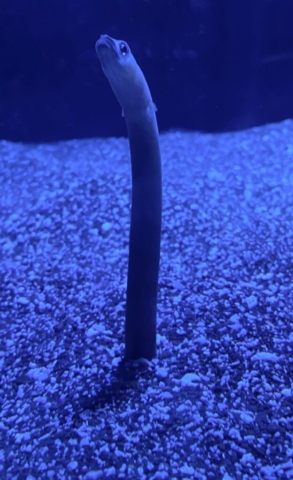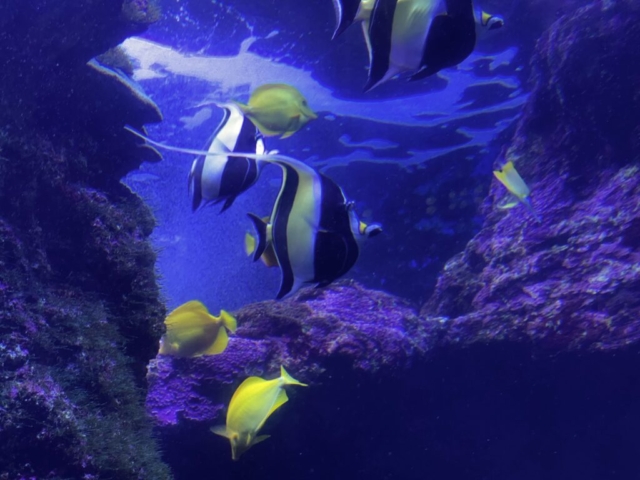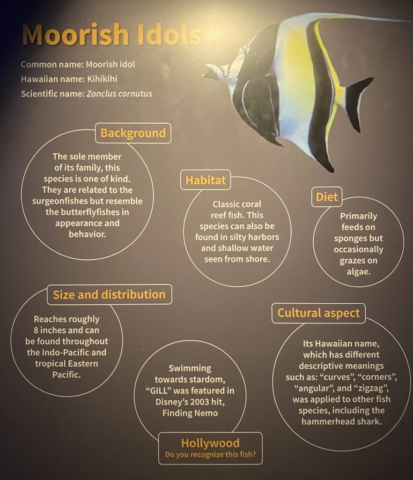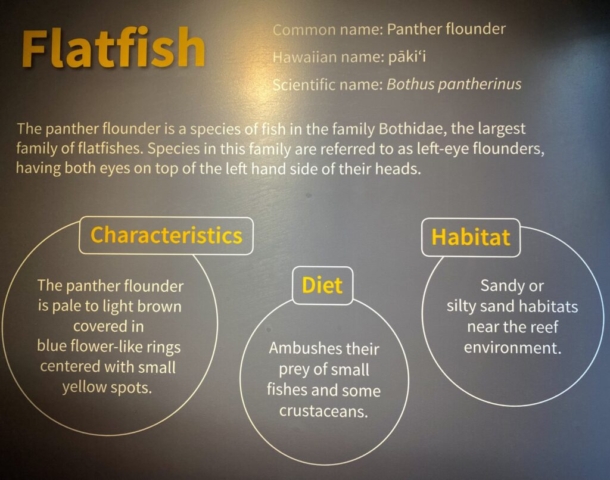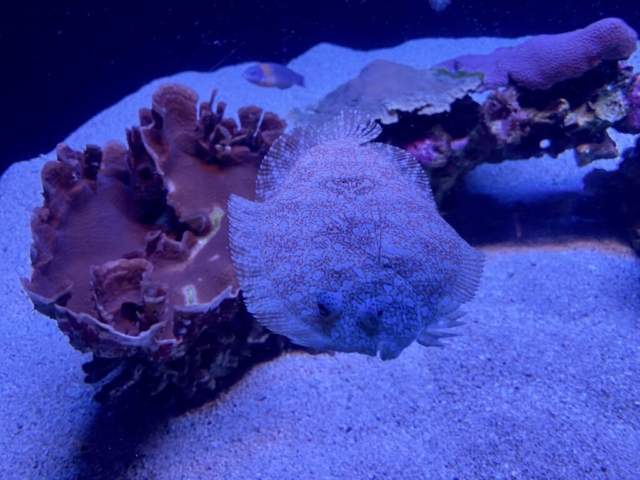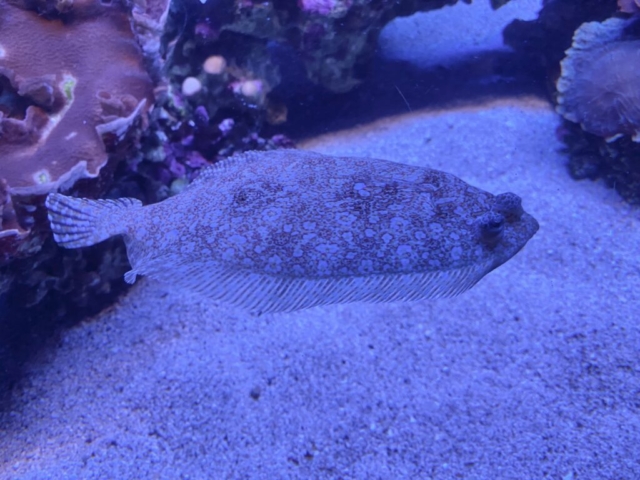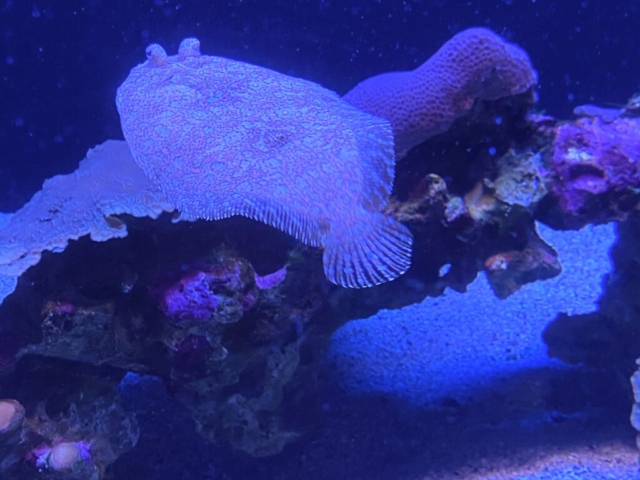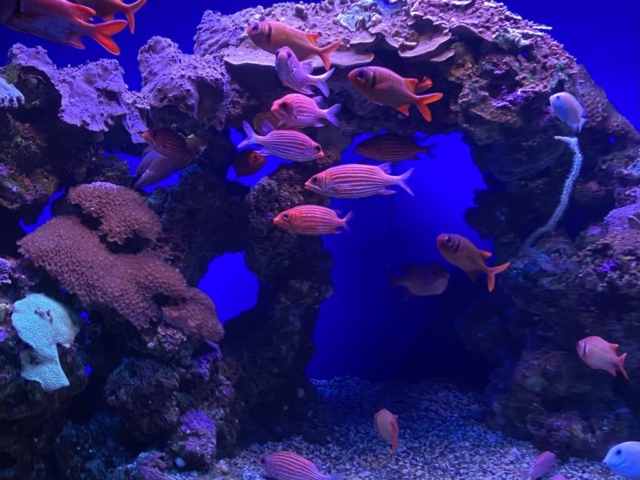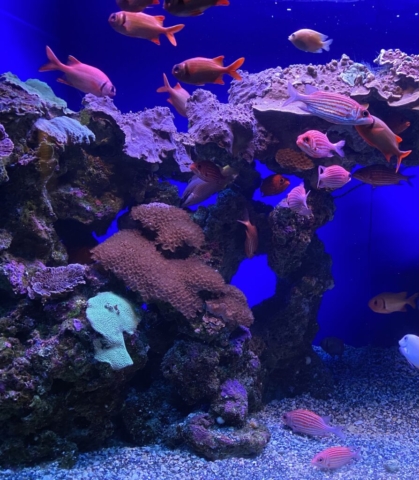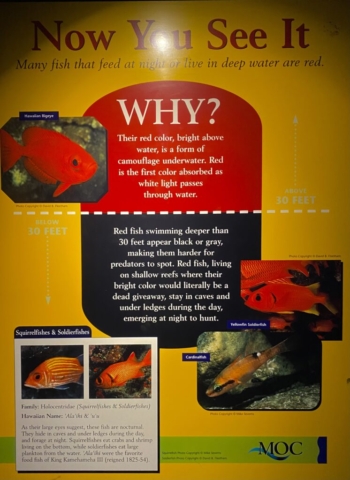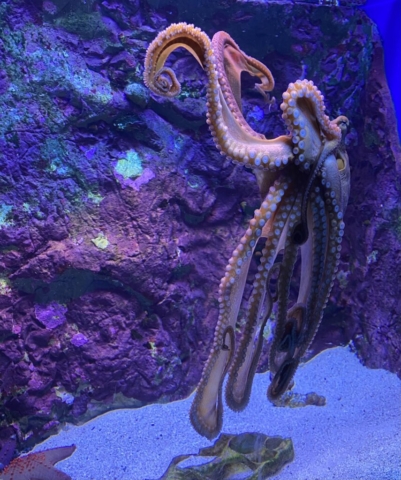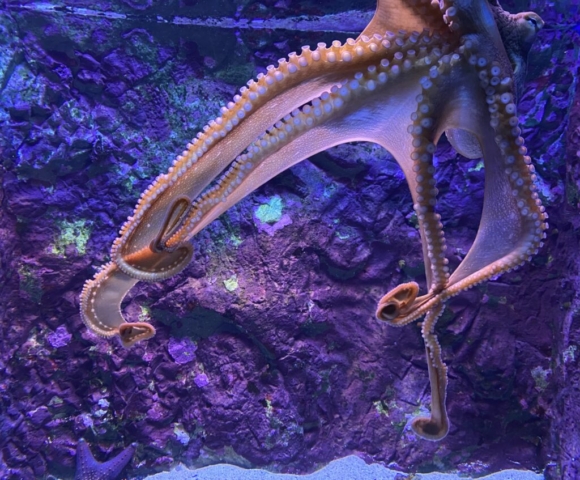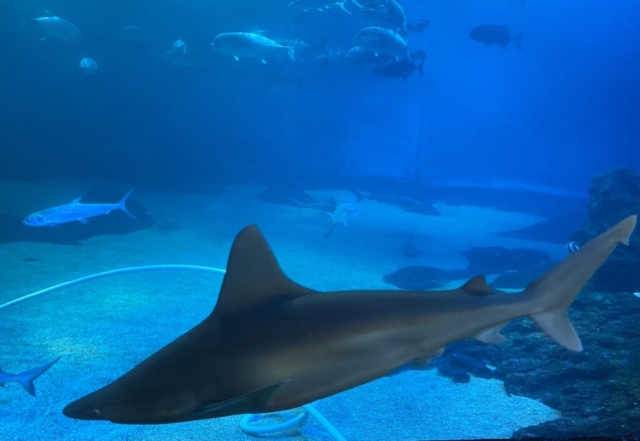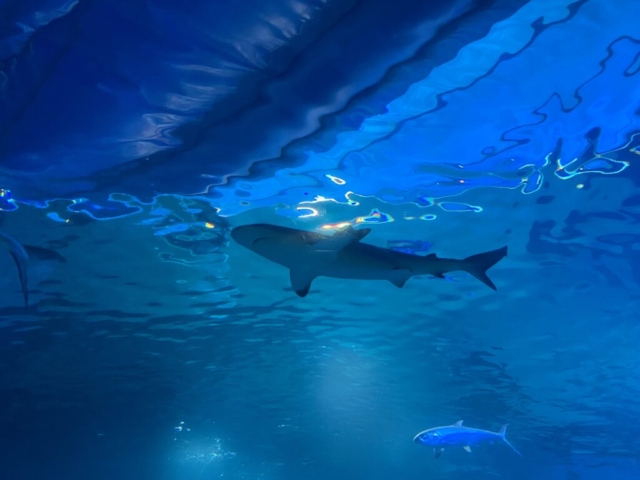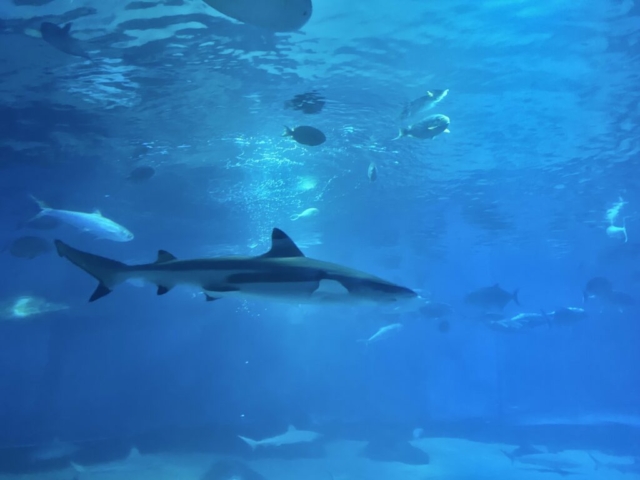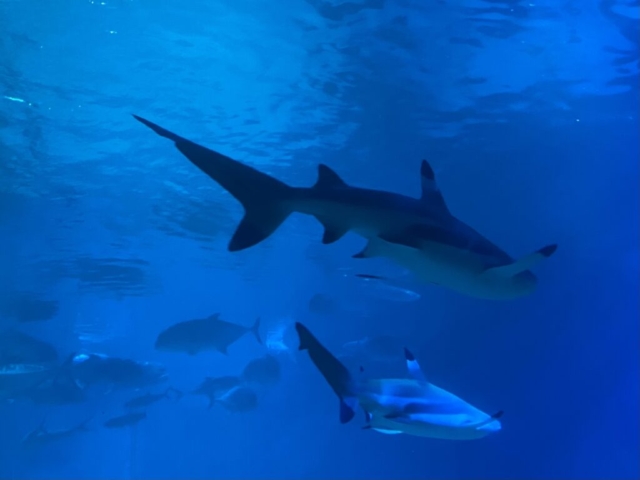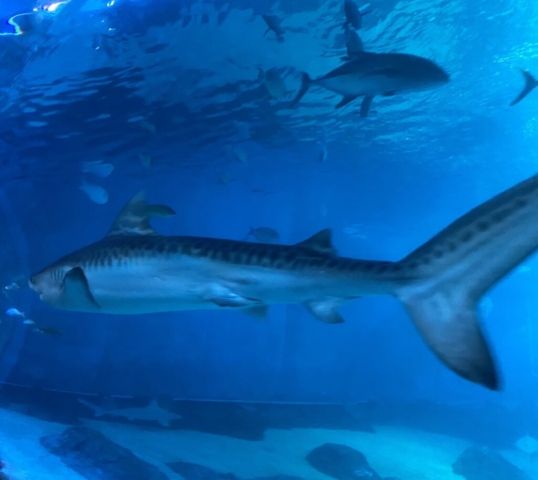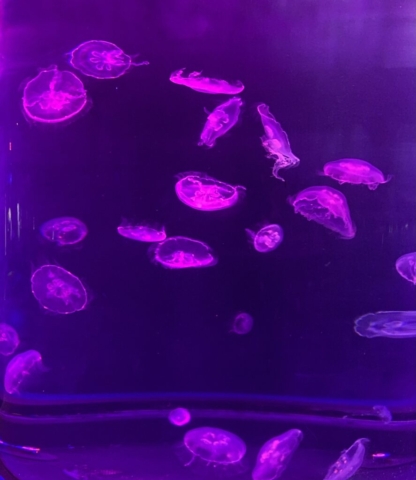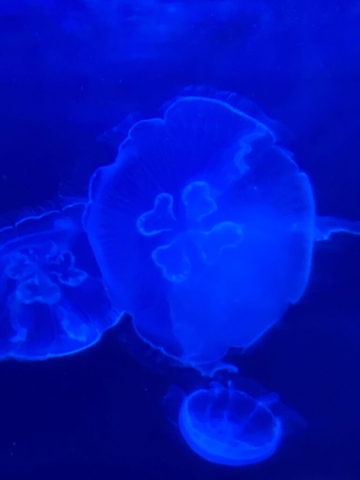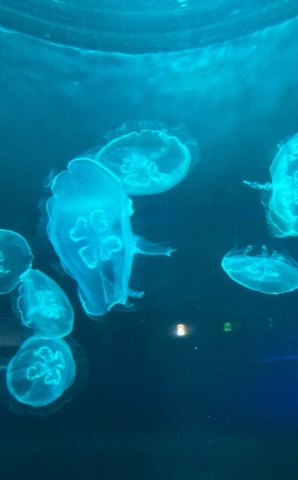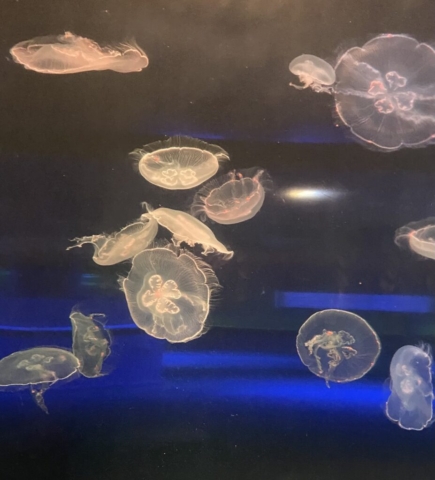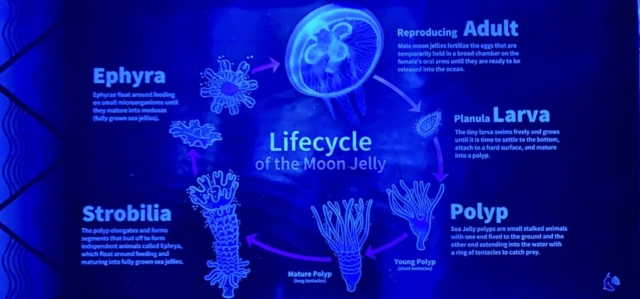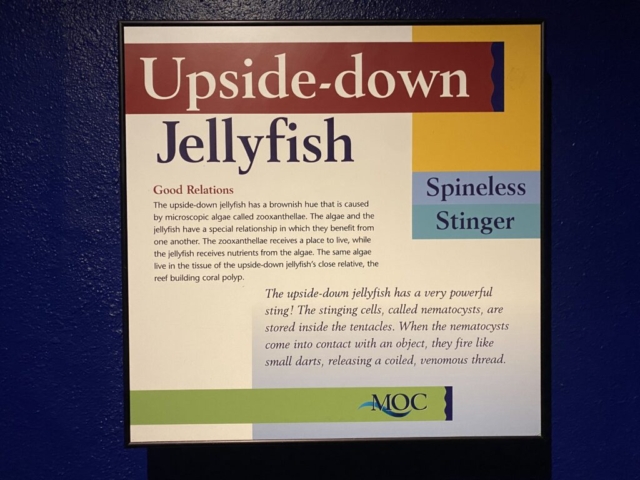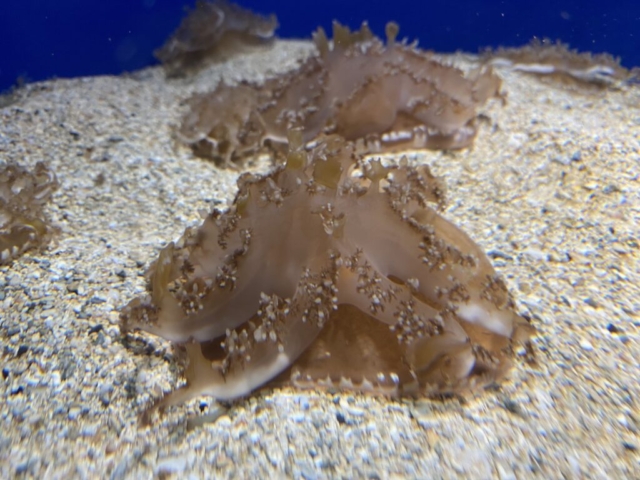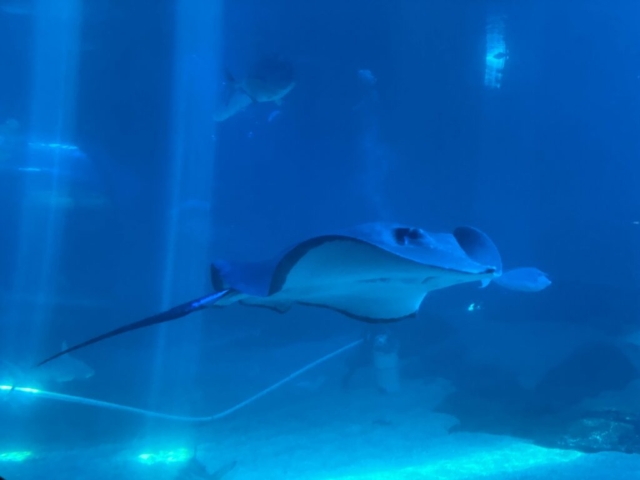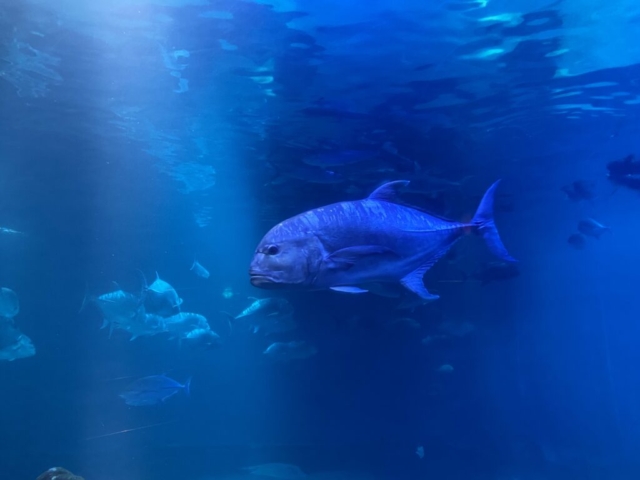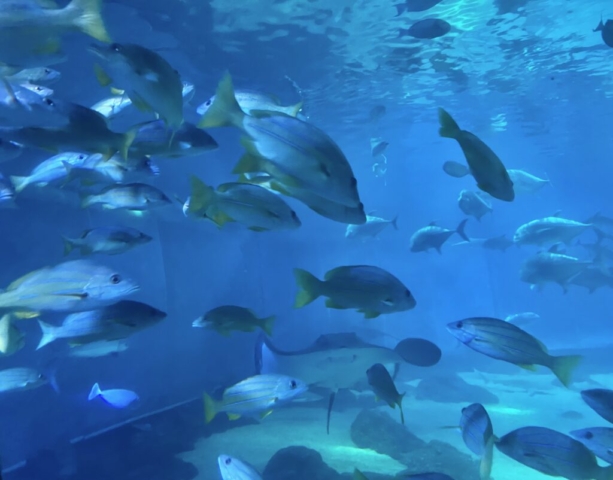Intertidal Zone
Your journey begins here at the Surge Zone (KAI KOHOLA) – where land meets the sea.
Freshwater streams flow down into the ocean, joining the surge of the tides.
Our path of exhibits reflects traditional Hawaiian navigation, starting upland (MAUKA), & moving seaward (MAKAI). As you continue you will decend from shallow Hawaiian waters into the deeper open ocean (MOANA AKEA).
THE INTERFACE BETWEEN LAND & SEA (KAI KOHOLA)
Hawaii’s coastlines can be a harsh environment for organisms, with surging seas crashing over jagged lava rock (A). Animals that live here have adapted to the constant shifting of tides & temperatures.
Historically, the intertidal zone was a place of harvest, recreation, & ceremonial practices for the native Hawaiian people (KÄNAKA).
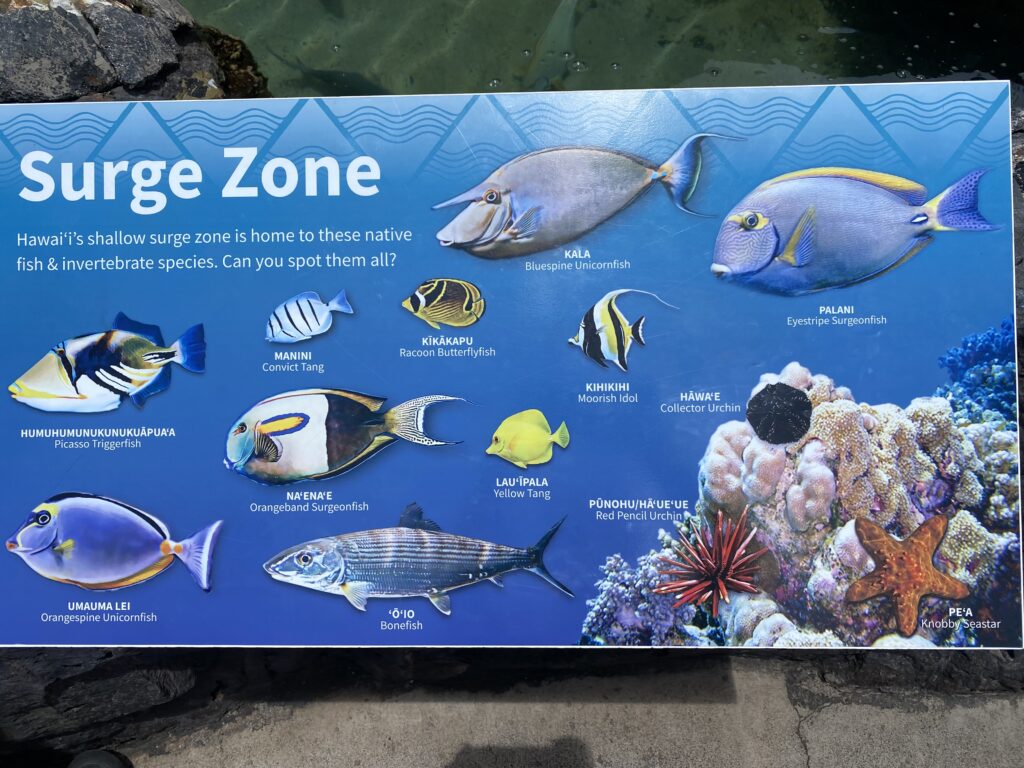
Turtles
Coral Reefs
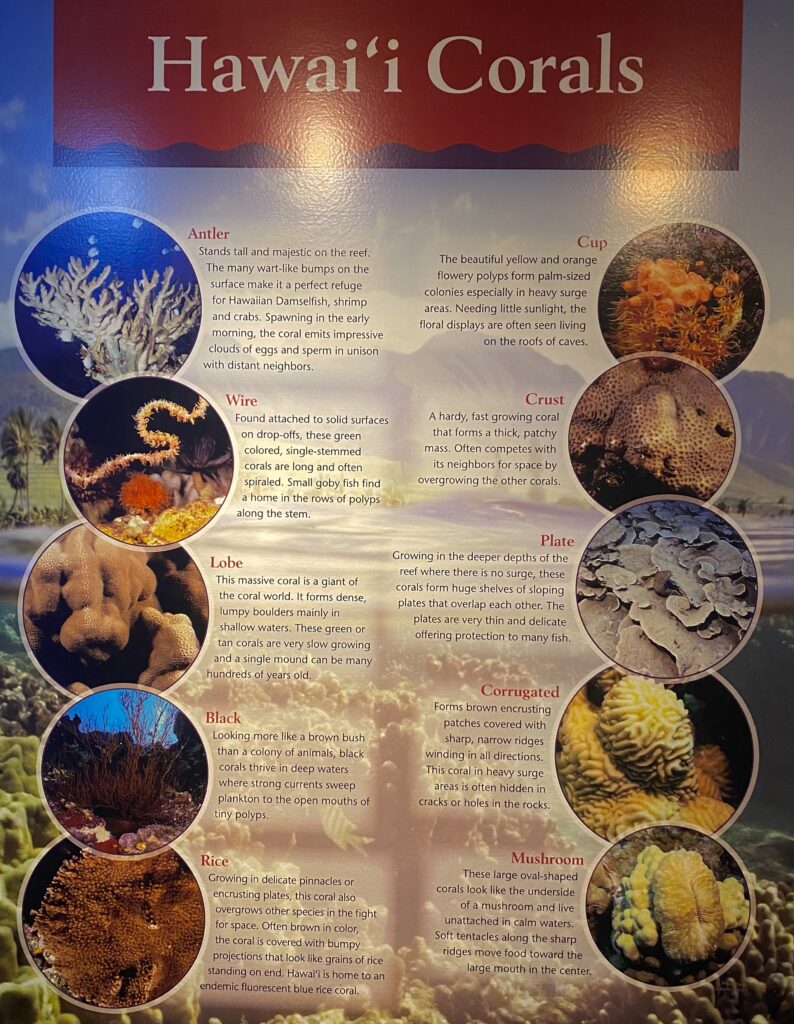
The individual animals making up a coral colony are called polyps. Each polyp has stinging cells called nematocysts within the tentacles that capture plankton, passing it to a small mouth-like opening to the stomach cavity. A hard limestone cup supports and protects the polyp.
Sea anemones and zoanthids are close relatives of the stony corals but do not secrete a hard limestone skeleton.
Corals, sea anemones and zoanthids have a symbiotic relationship with single celled algae called zooxanthellae. These cells live inside the transparent skin and are able to produce food and oxygen for the polyp when exposed to sunlight.
The polyp in turn, makes carbon dioxide, phosphates and nitrates that are then used by the algae.
Zooxanthellae can actually supply the coral with up to 98% of its food
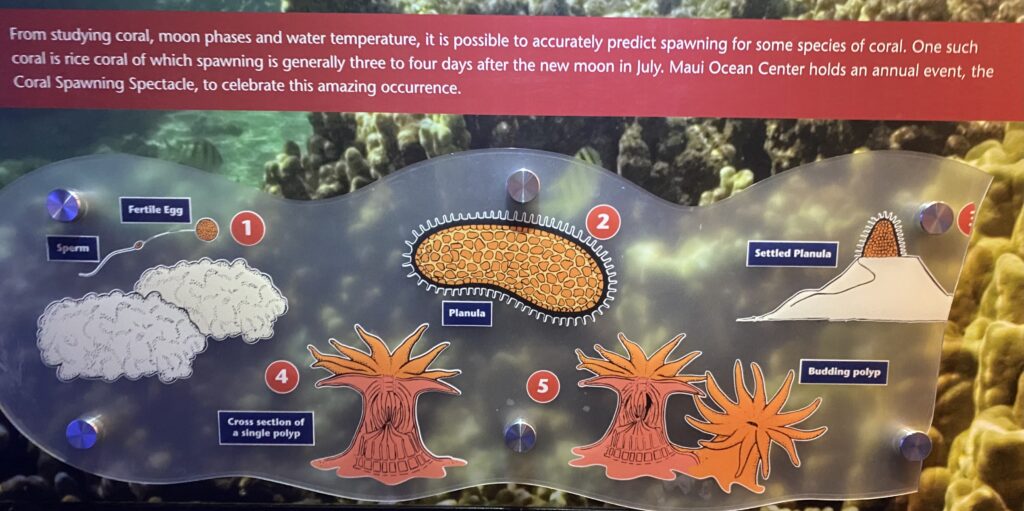
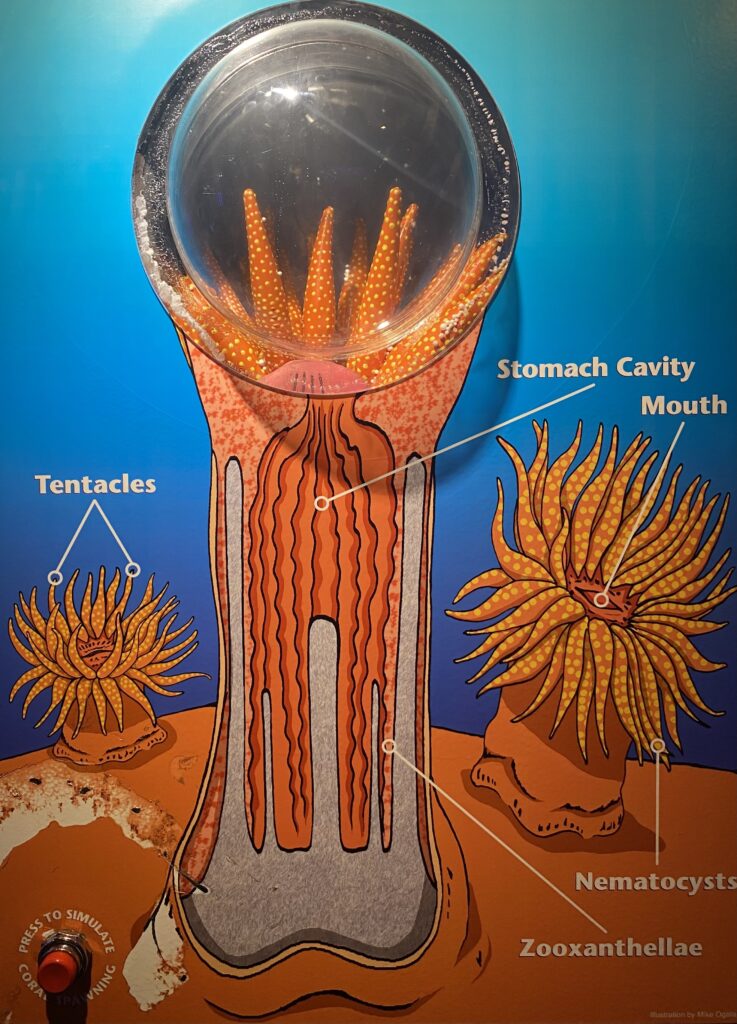
From the relatively barren waters of tropical oceans, coral reefs emerge like an oasis at the edge of a vast watery desert. Corals are found in all oceans of the world – even in polar regions. But only within the tropics do corals grow to form reefs. This is due to a special relationship between corals and a type of algae, called zooxanthellae, which helps to build the reef structure.
Coral reefs are complex structures and home to hundreds of species of fish, and tens of thousands of other plants and ani-mals. The diversity of life within this unique environment may exceed that of the rainforests.
The reef’s rich structure allows animals to become specialized, and adopt residences and roles that define their part in the vibrant community of the living reef.
To survive within this busy undersea world, reef animals use a number of traits, or strategies. Color, mouth and teeth type, body shape and patterns are the most obvious characteristics. Many animals combine these physical features with unusual behaviors that are apparent only to the keen observer.
A Reef Is Born
The seabed beneath Hawaii’s islands is constantly changing. For over 80 million years, the Pacific Ocean floor has been drifting over a single hot spot in the earths crust.
During this time more than 107 volcanoes erupted, forming a single 3,600-mile chain that includes the Hawaiian Islands and the Emperor Seamounts. The Big Island of Hawaii is still moving over this hot spot at a speed of around 3.5 inches a year.
Corals and the reefs they form are survivors. Despite the activities of volcanism and successive ice ages, they have maintained a foothold in the Hawaiian Islands for hundreds of thousands of years. As the islands continue to be born, age, and eventually sink beneath the sea, their coral reefs change from fringing reefs to barrier reefs to atolls. Because Hawaii’s islands were created millions of years apart, all three types of reef are found here.
Fluorescent Corals
Although corals are considered relatively simple animals in evolutionary terms, there is much about them we do not yet understand. Many corals produce pigments that enable them to fluoresce under special light. Although spectacular in appearance, the role of these pisments is unknown.
Most corals require large amounts of light for successful growth. With this requirement comes exposure to damaging parts of the light spectrum.
One of the most potentially dangerous of these is ultra-violet light.
The algal cells, or zooxanthellae, which live in coral tissue, may produce ultra-violet absorbing chemicals. These are then distributed in the tissue of the coral, protecting it from damage.
Sea Shells
What Is A Sea Shell?
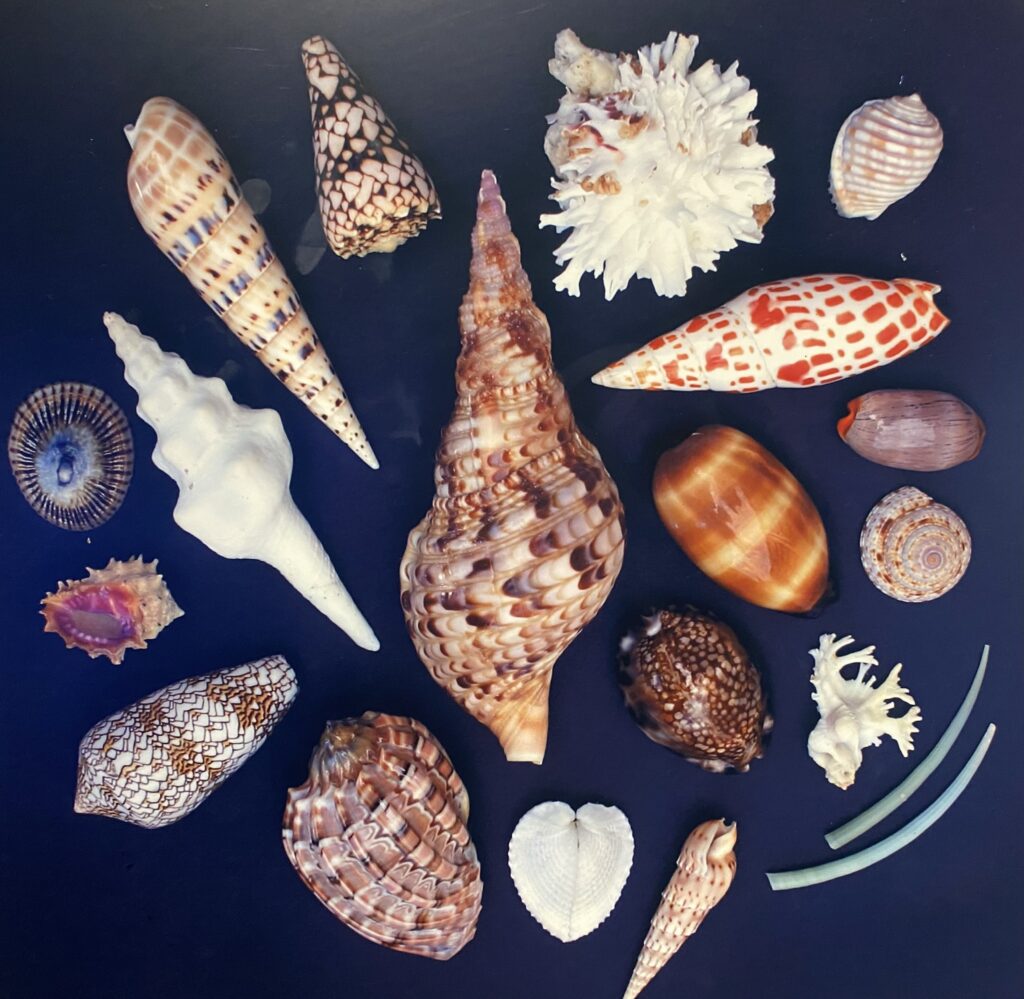
A sea shell is a protective covering for a soft-bodied marine animal.
The highly adaptable animal that lives inside a shell belongs to a phylum called Mollusca. Mollusks are an enormous and varied group of animals with extraordinary colors, shapes and patterns.
A Diverse Collection
Approximately 1000 species of mollusks inhabit Hawaiian waters in a wide range of environments and depths. These diverse creatures have remarkable shapes, characteristics and sizes.
Mollusks can be herbivores, predators, scavengers or filter feeders. Some familiar mollusks are mussels, clams, oysters and cowries.
Hawaiian Traditions
Surrounded by the sea, the early Hawaiians relied on fish and mollusks, or “pūpū”, as a source of food, and used their shells for tools, decorations and ceremonial objects.
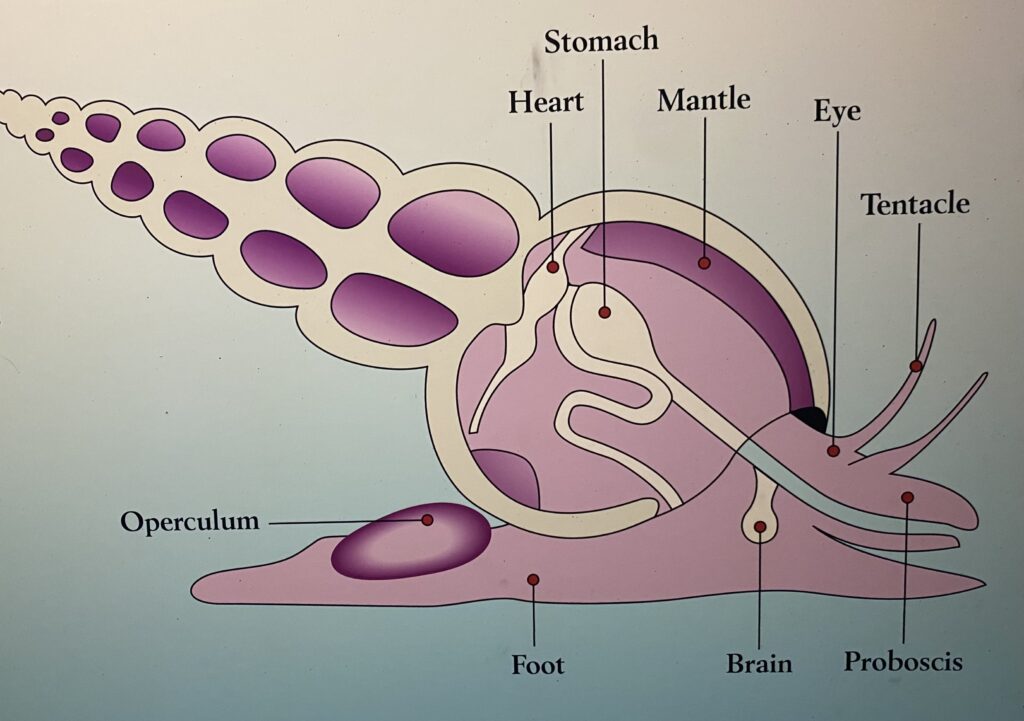
Gastropod Anatomy
Gastropods are a type of mollusk known as marine snails. These animals are protected by their one-piece shell, and crawl slowly using a muscular foot. Over time gastropods have developed a simple heart, stomach and brain. A primitive eye allows the animal to detect potential predators, giving it time to retract its head and foot into its shell for protection.
The Growing Shell
As the animal grows, the hard shell grows with it. The part of the mollusk that makes the shell is called the mantle. The mantle of the mollusk secretes three layers of material that build the shell. The inner layer is smooth and has a pearly luster, while the middle layer contains calcium carbonate for strength. The protective outer layer is thin and often covered with calcareous algae and other organisms.
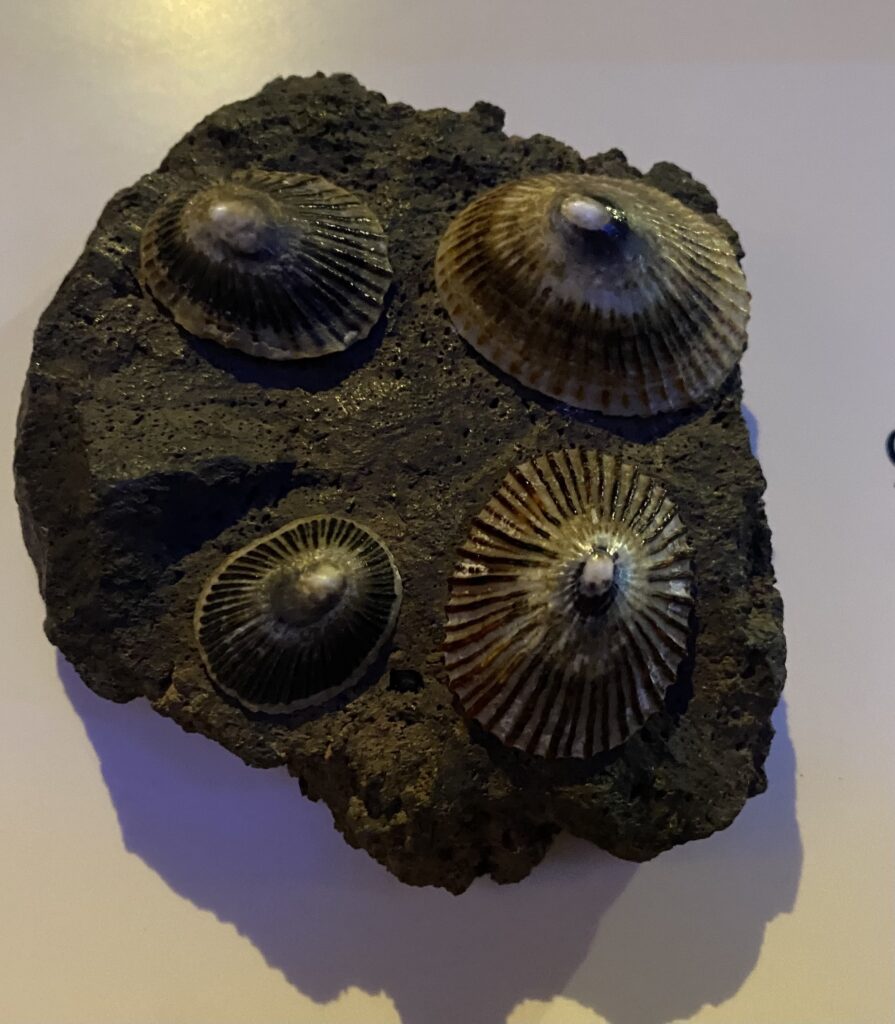
‘Opihi ~ True Limpets
‘Opihi were harvested from rocks in the fierce surge zone. This
gathering was so dangerous that the ‘opihi was called “hei ‘a make”, or creature of death. Even to this day, at least one ‘opihi harvester a year is swept off the rocks trying to gather this revered mollusk. The high ribs of the ‘opihi shell made them useful tools for scraping. Polishing the shells into a glossy sheen made the ‘opihi beautiful for jewelry and leis.
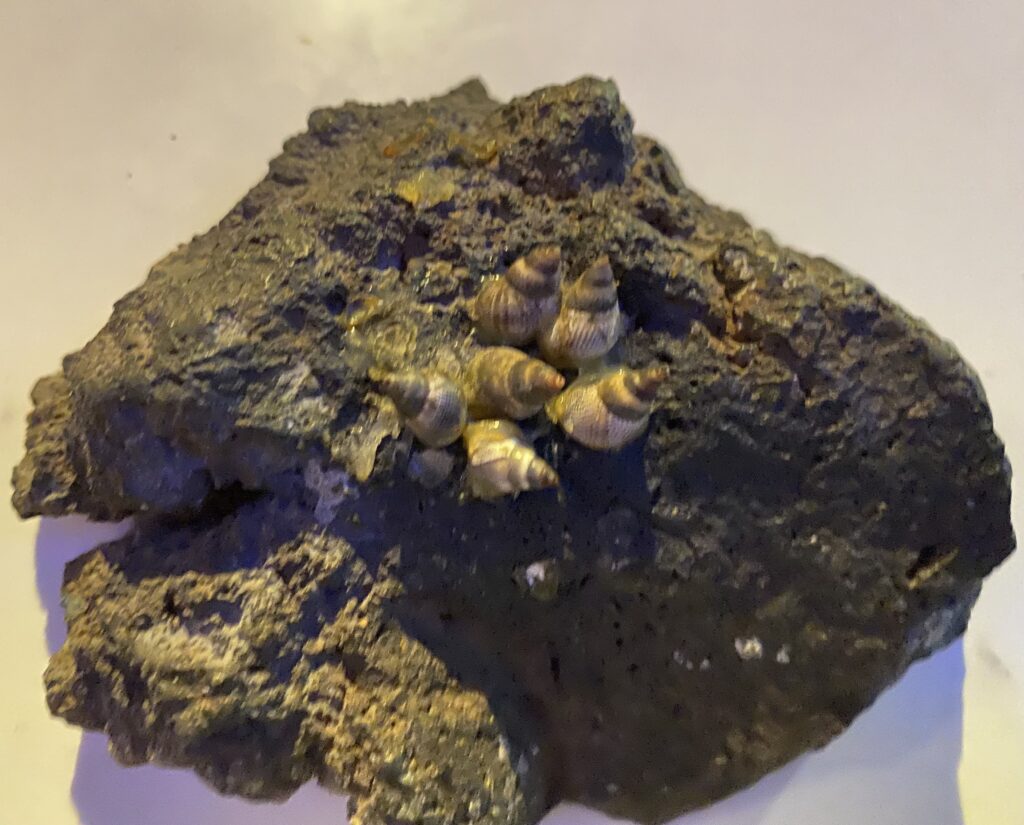
Pipipi kolea ~ Periwinkle
The Hawaiian name means small and close together. The pipipi kolea is found in large groups on the rocks, high above the pounding surf. The Hawaiians had an easy time gathering this small but tasty snail, which was eaten raw or boiled in sea water.
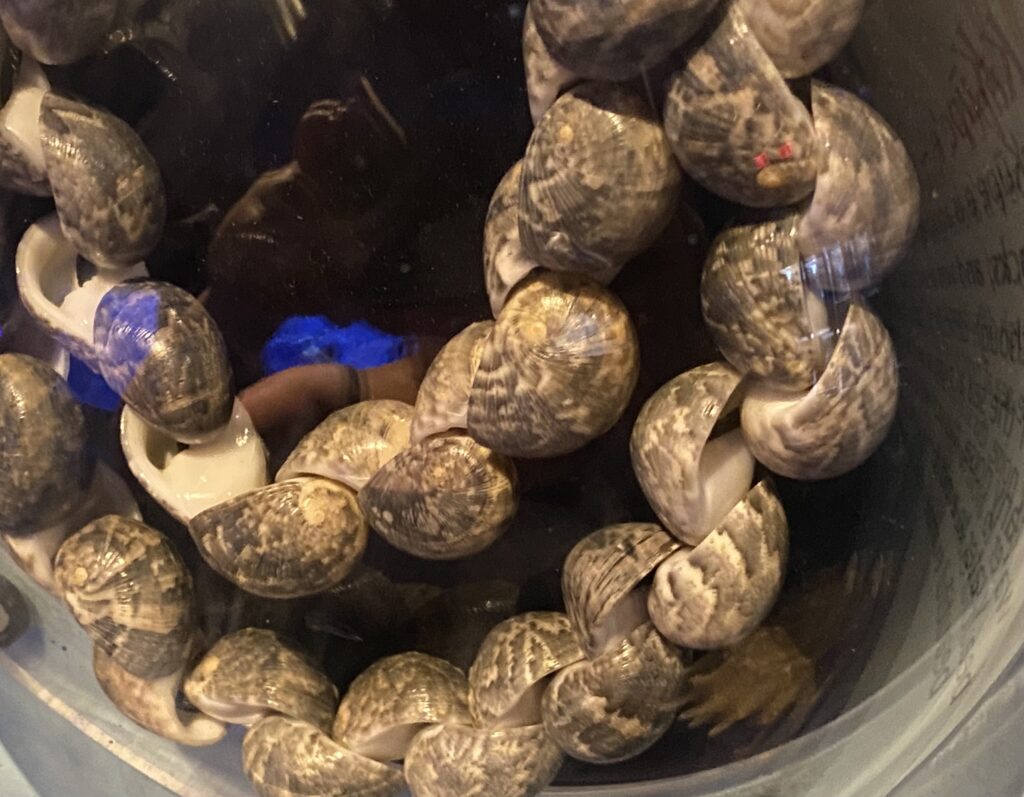
Küpee ~ Nerite
Küpe’e is another mollusk that climbs the rocks, and was also a valuable food source, although difficult to gather. Küpe’e crawl out of the sea at night to feed, but upon hearing any noise, this snail will fall back into the water to avoid danger. Nerite leis are a beautiful example of their use as jewelry.
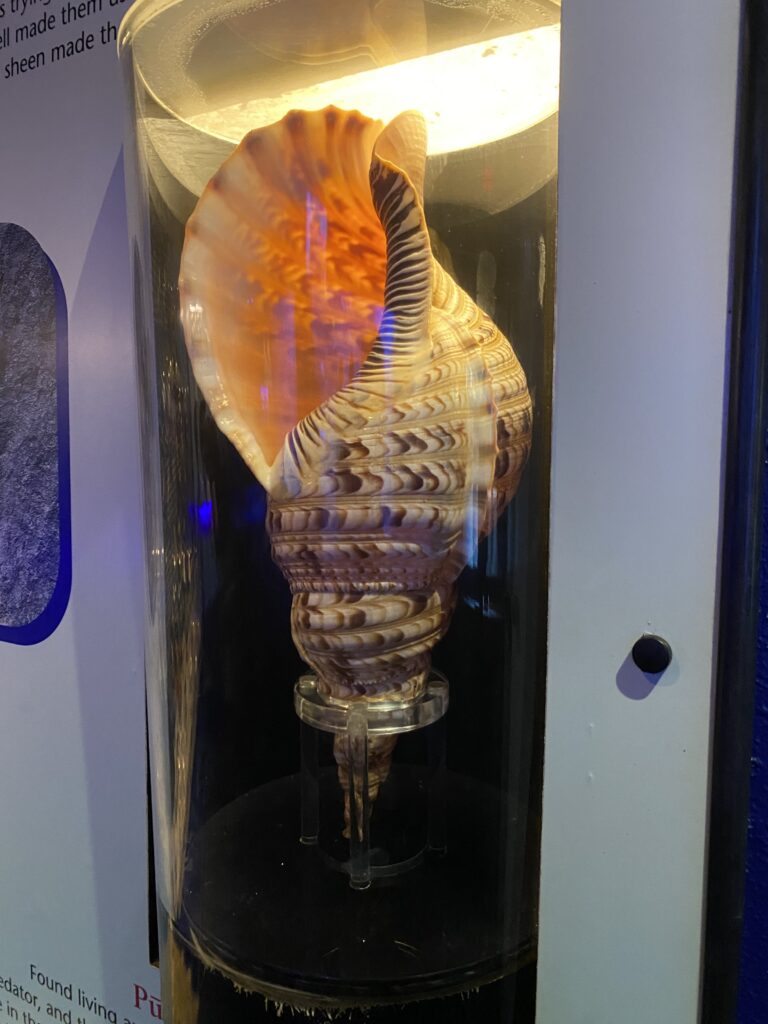
Pü
‘Ole ~ Triton’s Trumpet
Found living among coral rubble, pu ‘ole is a fierce predator, and the largest mollusk in Hawaii. After drilling a hole in the end or side of these large shells, pu ‘olé produce a beautiful, clear sound when blown. Hawaiians used this great shell to signal danger and to summon the people for ceremonies. It is still used today in many religious rituals.
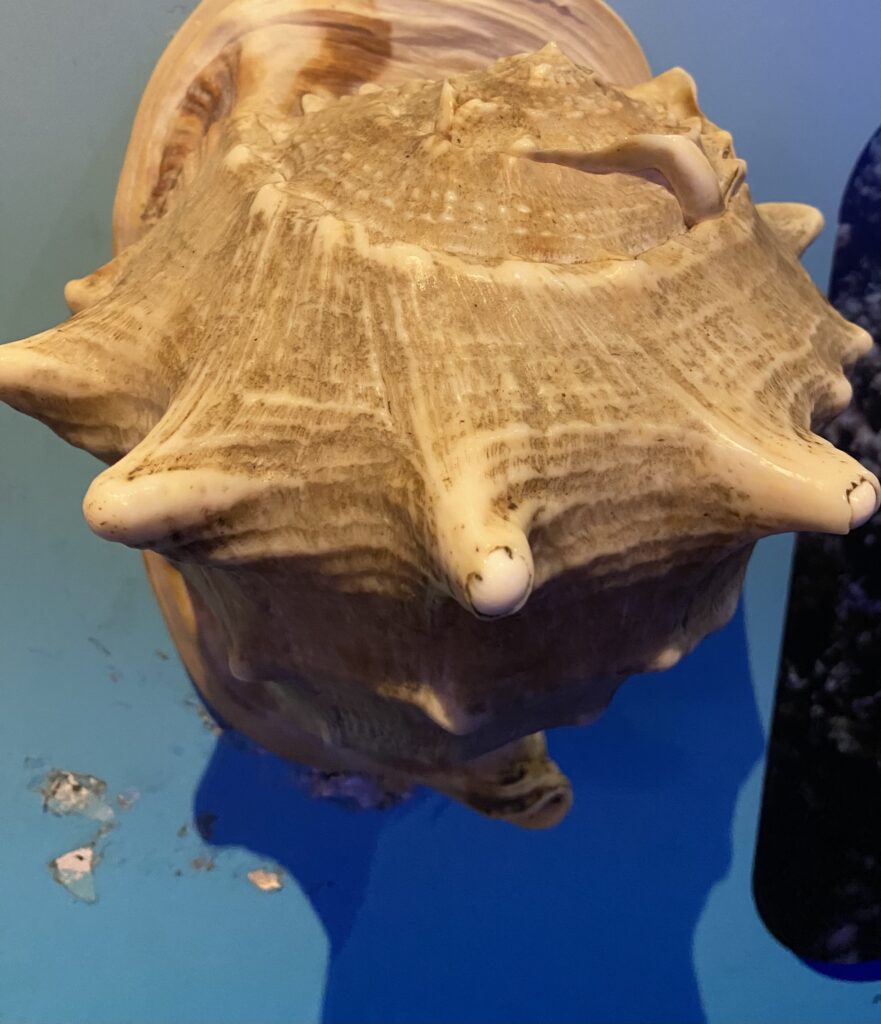
Pü puhi -~ Horned Helmet
Like the pu ‘ole, the pu puhi was also used as a loud trumpet. A hole drilled in the end of this large knobby shell produces a powerful tone.
Today we see it used daily
MOC
to signal the setting sun.
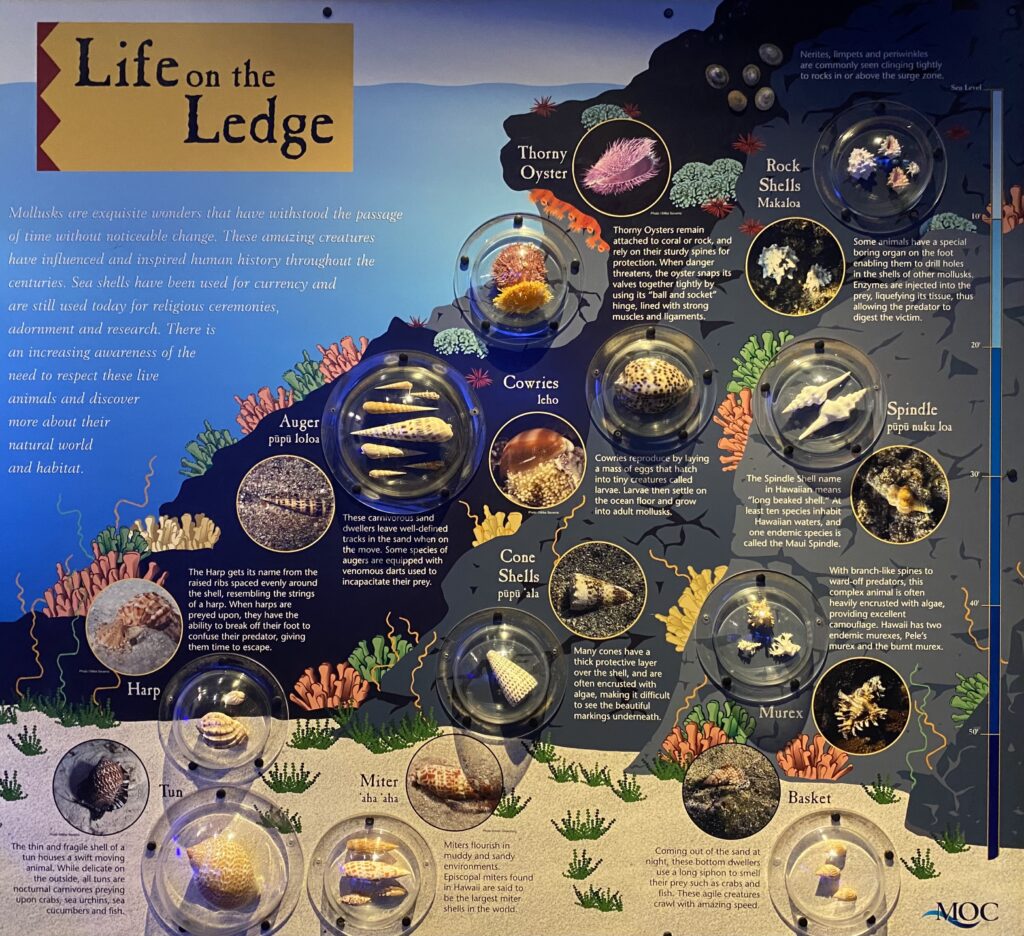
Why does Hawaii have so many endemic fish?
Hawai’i is the most remote island chain in the world and has nearly 70 million years of isolation in the middle of the Pacific Ocean. As a consequence of low population diversity, mutations occurred more rapidly and new species evolved. Although these species may appear similar to fishes found in the western Pacific and on other coral reef ecosystems, genetic studies confirm their uniqueness.
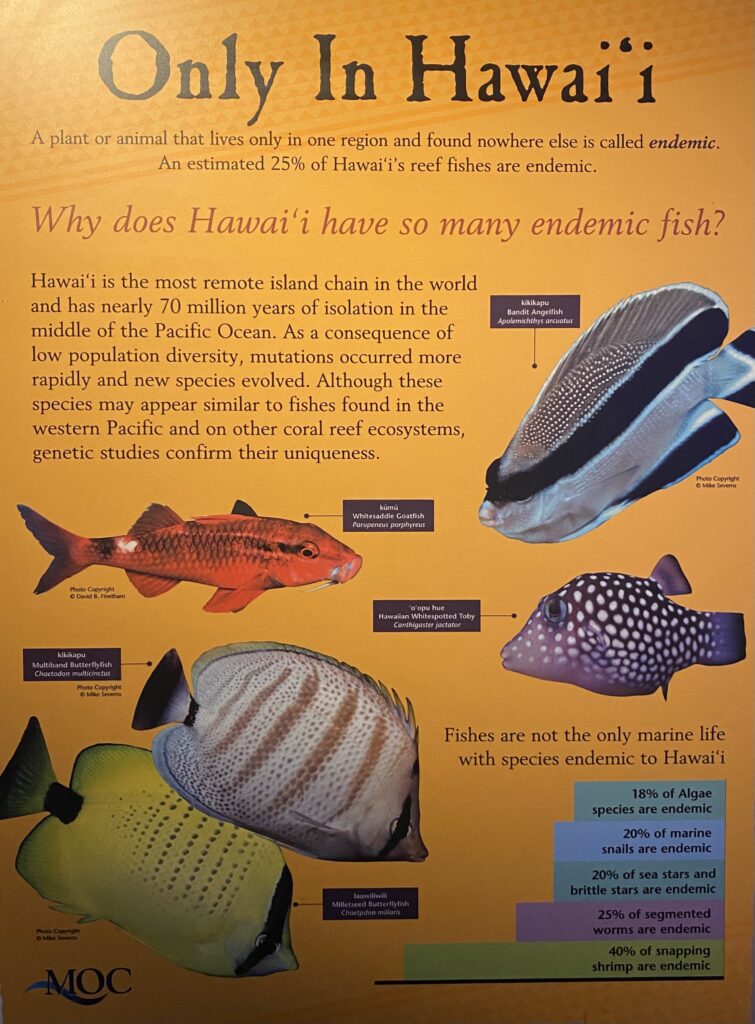
Sea Surgeons
Toxic Tales
Certain fishes use toxins to deter their predators. Pufferfishes and trunkfishes possess poisons that are harmful when ingested.
Pufferfishes are able to draw in water and inflate themselves. By doing this, they either scare off their predators or make their bodies too large to be swallowed.
Triggerfishes are named for their second dorsal spine, or trigger, which locks the first spine into place. A triggerfish, being pursued by an eel, can wedge its compressed body into a crevice within the reef and lock its trigger in place. This makes the eel’s pursuit more challenging. Triggerfishes also have small tooth-like spines near their tail that provide additional protection.
Triggerfishes are among several types of fishes called pua’a kai (sea pig) and are considered acceptable substitutes in Hawaiian religious ceremonies in which a pig would normally be offered.
Most scorpionfishes are ambush predators. They wait for their prey to swim by and then dart out to engulf their unlucky victim.
The Hawaiian turkeyfish and lionfish have venomous dorsal spines. The hunting strategy of these scorpionfishes involves spreading out their pectoral fins and slowly swimming towards their prey. The opened fins hide the beating tail, allowing them to take their prey by surprise.
The leaf scorpionfish is not known to be venomous. It uses camouflage to hide from predators and approach its prey. This small scorpionfish can change color to match its surroundings as well as mimic a piece of algae rocking back and forth in the surge.
Eels
Moray Eels
Moray eels are bony fishes perfectly adapted for life on the reef. They have very long bodies with thick, slippery skin and no fins on their sides to get caught in the coral.
Most moray eels have sharp teeth for catching fish, but a few eels have pebble teeth for crushing crabs and shells.
Moray eels have poor eyesight, but an excellent sense of smell, and hunt mainly at night.
They will defend their homes, so keep your hands out of holes in the reef.
As in some species of fish, morays begin their adult life as males, and as they mature change to females.
Female morays spawn on summer evenings. The eggs are fertilized, then drift in the plankton for up to nine months. This long larval life has contributed to the abundance of moray eel species found on Hawaii’s reefs. When the eggs hatch, the young eels move to the ocean floor where they eventually develop into adults.
Garden Eels
Garden eels form cotonies in sandy, deep water areas where the water: current is strong.
The back half of these fish remains buried in sand, while the head rises above the bottom to pick plankton from the current.
This shy eel is able to quickly sink tail-first into the sand when frightened.
The Hawaiian garden eel can be two feet long, and: is found at depths of 35 to 175 ft.
Moorish Idols
Flatfish
Red Fish in the Deep Water
Many fish that feed at night or live in deep water are red.
WHY?
Their red color, bright above water, is a form of camouflage underwater. Red is the first color absorbed as white light passes through water.
Red fish swimming deeper than 30 feet appear black or gray, making them harder for predators to spot. Red fish, living on shallow reefs where their bright color would literally be a dead giveaway, stay in caves and under ledges during the day, emerging at night to hunt.
Octopuses
Two octopus species are common in Hawaii.
Distant cousins of marine snails, octopuses are intelligent animals with excellent eyesight and the ability to change color and texture rapidly. They have 8 arms with 1,920 muscular suction cups used for catching prey and gripping the bottom. These organs of attachment work hydraulically; each one has a central piston-like part that can be withdrawn, creating a suction.
Octopuses are active hunters that feed on crabs, shrimps and fishes. Once caught, the prey is bitten with a sharp beak located at the base of the octopus’s body (at the center of the arms). A toxin is secreted from a salivary gland which rapidly paralyzes the prey.
The absence of bones allows octopuses to slip easily through small openings and into small holes in the reef. This frequently brings them into conflict with moray eels which inhabit similar holes within the structure of the reef. Rocks and shells piled up by the octopus often mark the entrance to its home.
Very few octopuses live longer than 1 year. Adult males die shortly after mating, and females die after the hatching of the young.
He’e – Octopus cyanea
The day octopus has a life span of 14 months. It reproduces only once, at the end of this time. During courtship the male takes on a black and white-striped coloration which attracts a receptive female. After mating, the female retreats to a sheltered place and lays strings of eggs which she cares for until hatching. Both male and female die after reproducing.
Sharks
WHAT ARE ‘AUMÄKUA?
In Hawalian culture, ‘aum&kua can be the physical manifestation (Kino lau) of an ancestor in an animal, plant, object, or element.
“This deified ancestor is meaningful to the families’ practice and possesses enormous mana (spiritual power). Giving everything in your natural environment the respect and reverence of a god or deity makes our kuleana (responsibility) clear, and shows where we fall into the natural order of things.”
– Kahu Dane Uluwehiokalani Maxwell, (Current Maui Ocean Center Hawaiian Cultural Advisor)
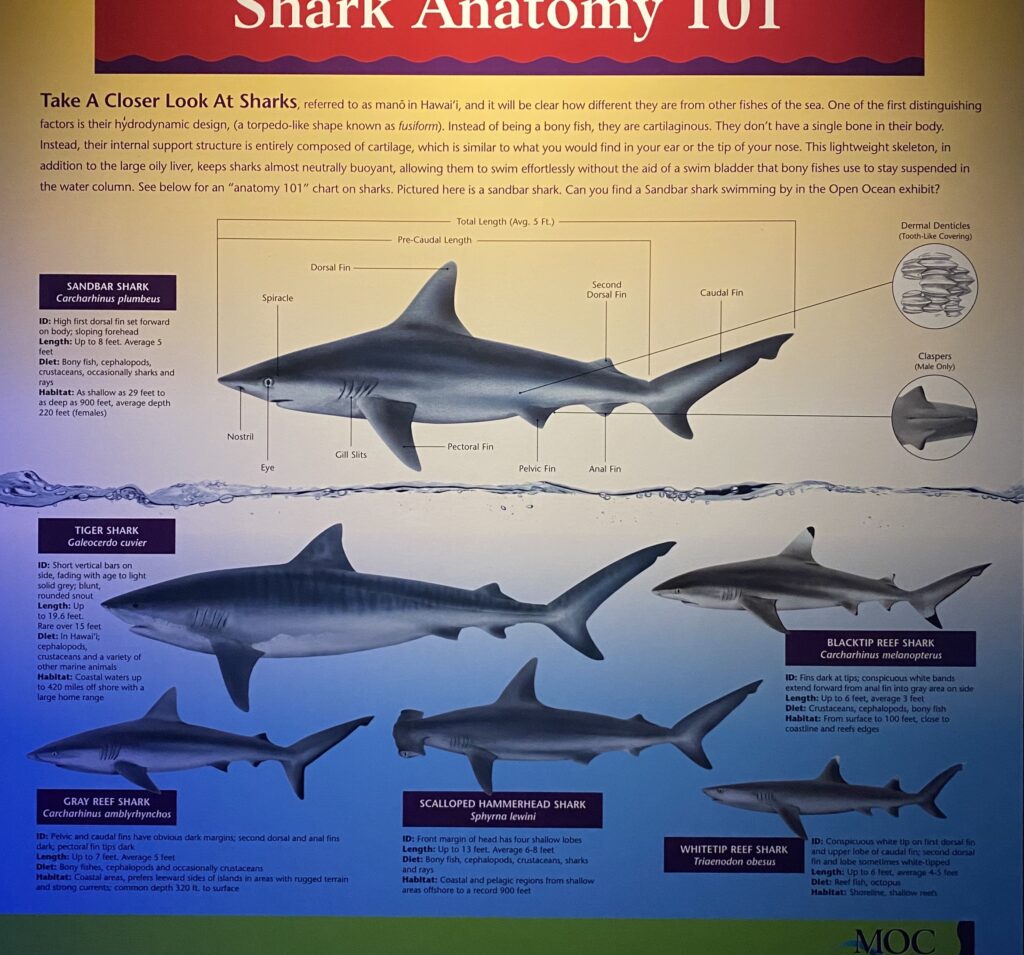
Did You Know?
In Hawaiian culture, the triangle design is a symbol of teeth, usually shark’s teeth. A stacked triangle pattern (pictured below) represents the spear, used to hunt on land & in the sea. This pattern can symbolize both life & death.
“Our people convey spiritual importance to animal deities that were created to protect us”
– Kahu Charles Kauluwehi Maxwell Sr.
(Original Maui Ocean Center Hawaiian Cultural Advisor)
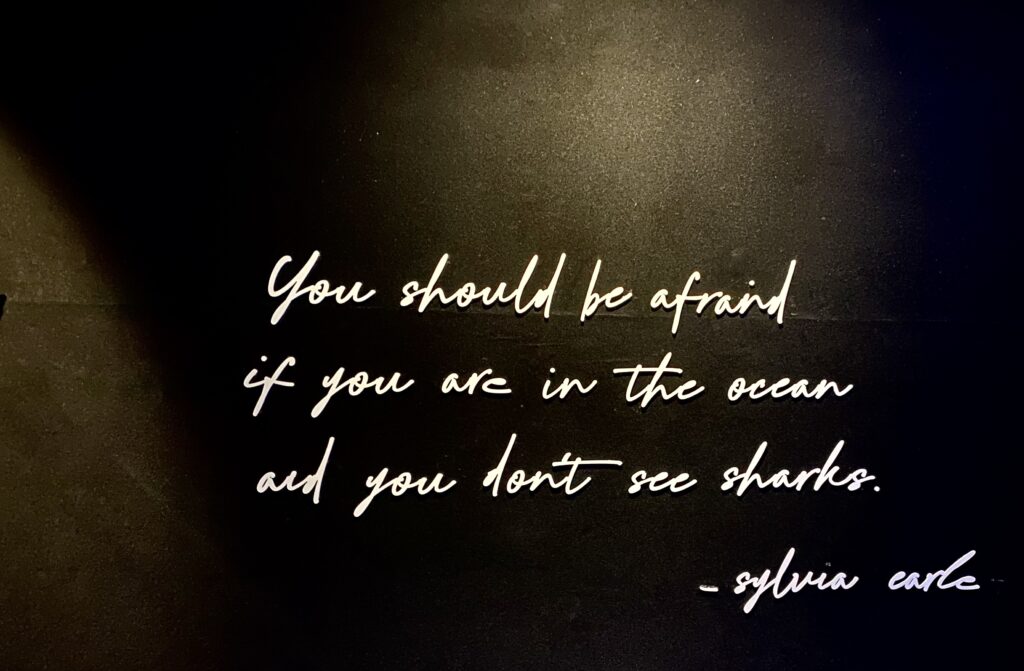
Jellyfish
Jellyfish ar e not fish, but relatives of corals and sea anemones. All have a centra mouth ringed by stinging tentacles. True jellyfish have
a pulsing umbrella-like bell, while distant relatives like the Portuguese Man-o’ war do not.
More than 95% water, jelly-fish have no brain, only a loose net of nerves and muscles. Tiny sensors around the bell rim allow the jellyfish to
sense vertical direction and light intensity.
Most jellyfishes are poor swimmers, though they can move by ‘pumping’ their bell. They drift with the ocean’s currents and feed in a variety
of ways. Some catch small fishes with their tentacles, others filter tiny planktonic organisms from the water, and some are similar to corals
in that they produce food by photosynthesis. While some species are completely harmless to us, most can inflict stings. These range from a tingling sensation to excruciating pain. Some are even capable of causing death.
Blue Ocean
The waters of the tropical ocean are intensely blue.
Light from the sun appears to be white but is actually made up of many different colors.
These are visible in rainbows. As sunlight penetrates the surface, the red, orange and vellow is filtered out, and only blue light remains. The clearer or deeper the water is, the more blue it appears.
